|
Forum: Photographic Technique
04-22-2021, 12:40 AM
|
| |
I've shot Junior Cross-Country, but not in heavy rain, only light rain that wasn't too dramatic. However, I've shot Track & Field in heavy rain with a K-5 & DA*60-250/F4.
1st day of the Queensland Little Athletics 2013 South East Regional Championships held at Browns Plains: https://www.pentaxforums.com/forums/pentax-k-5/115277-k-5-sports-photography...ml#post2307837
Regarding an event in the rain, here's the amount of rain we were getting at 2pm at Day 2 of the Little Athletics Queensland 2015 State Titles at the State Athletics Facility at Nathan (a southern suburb of Brisbane). We had moved up to the top row of the main stand in an attempt to get out of the rain, but the wind was still blowing it in to us.
Gusting rain
This rain delayed the schedule. My son managed to get into the U13 Boys 400m Final. The heat times, on Day 1 (in the dry), were hot and I didn't think he would have much of a chance in the final. I think he was the 6th fastest qualifier. The final was delayed 2.5hrs and was run at 6:40pm. It was still raining but the wind had died down. He's in the inside lane. He came 2nd with a strong finish, so he handled the conditions better than most of the faster qualifiers:
LAQ 2015 State Titles U13 Boys Final
Here's a photo of the medal presentation. I think it was taken with the camcorder:

Dan.
|
|
Forum: Photographic Technique
03-24-2020, 08:44 PM
|
| |
I only shot junior swimming at a few events back in 2012, using a K5 + smc PENTAX-DA 55-300mm F4-5.8 ED. Regional & State-level competitions were frustrating to shoot because I had to stay in the stands, and the indoor facility, while with some lights up in the ceiling, was relying a lot on light coming in from a row of windows along the top of the wall opposite the main stand, so the swimmers were semi-backlit. But at District-level, it was more informal, and I was able to get down on the deck of a partially- covered pool and get better shots.
Because I only shot swimming for a short time, I didn't get much of an opportunity to work on my technique and work out the type of poses and framings that I should being pursing. And I never got a race shot where a very close finish was involved. Also, this lens was a bit soft at 300mm FL.
Shots 1&2: 1/400s, f/7.1, ISO100.
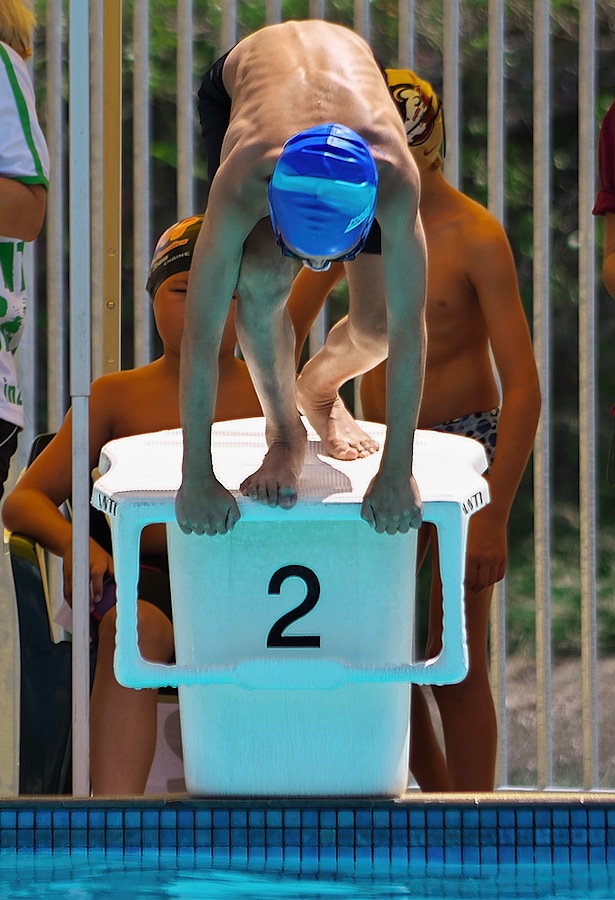
The hands in the 2nd shot suffer from motion blur. If I'd had more experience I would have used a higher shutter speed.
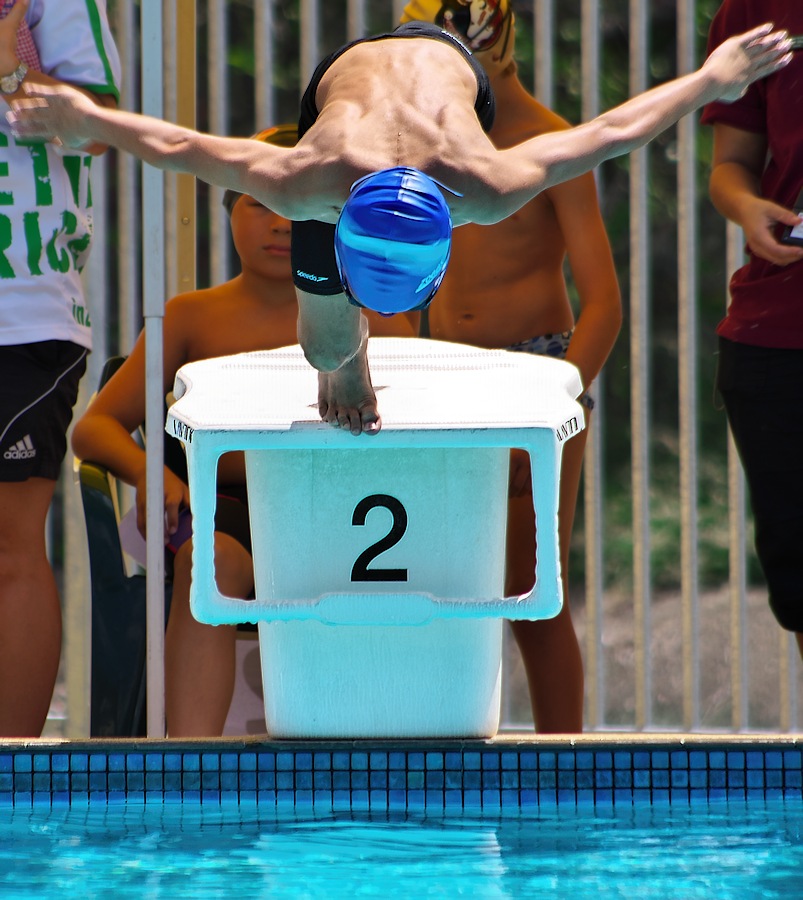
I like shots with sharp water droplets. Unfortunately, the shot with the pose I liked did not have outstanding droplet quality. I would have liked to have shot it with a K3 + DA* 60-250/F4.
1/1000s, f/7.1, ISO200.
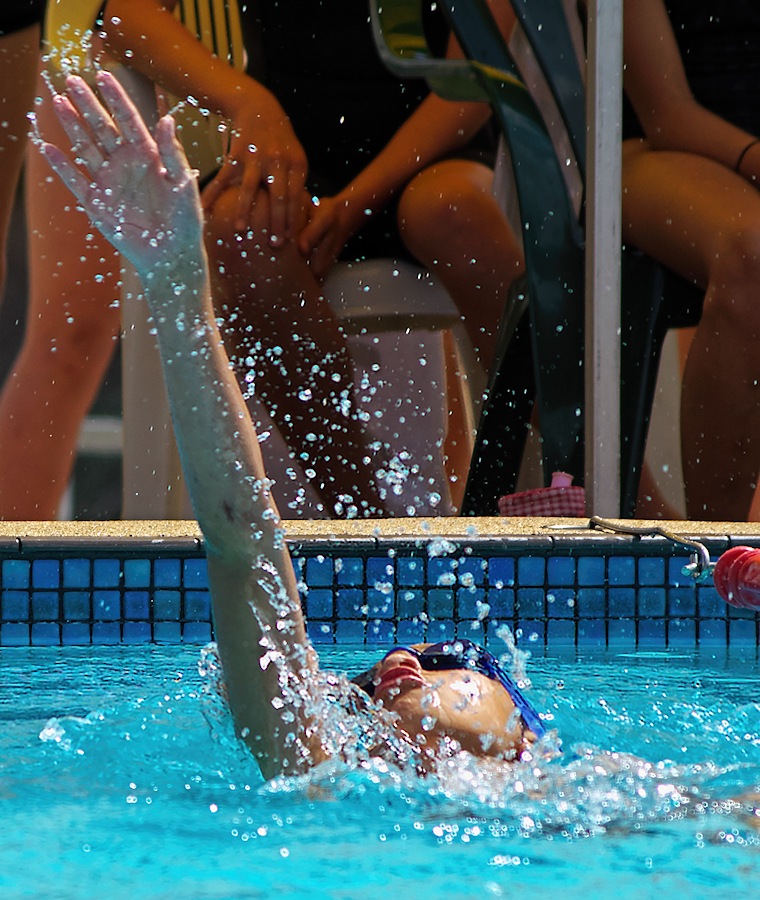
If you get the right time of day and location there are some interesting colours in the water. The next shot is not that sharp but I like the colours. I used a "cross-processing" colouration in PSP X7 to get this. In retrospect, I should have shot at 1/1000s.
1/200s, f/7.1, ISO80.
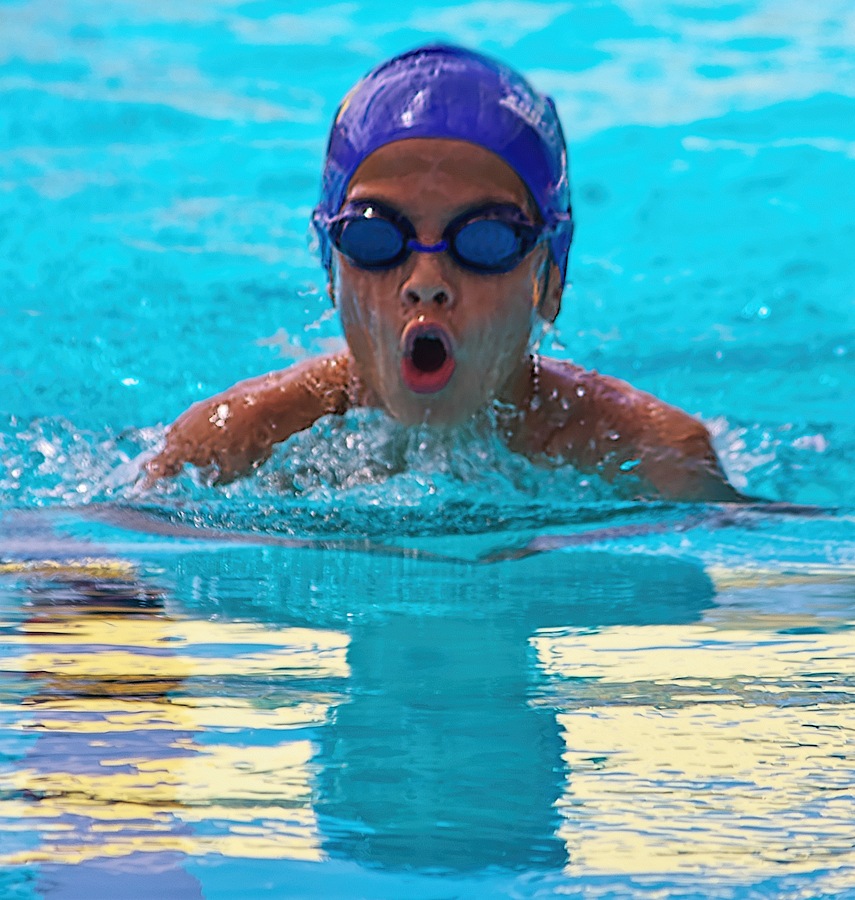
A Club event. The swimmers' appearance with their caps and goggles makes them look like aliens. I decided, when processing the final shot, to emphasise that aspect by really pushing the local contrast. The colours aren't realistic, more impressionistic.
1/800s, f/6.3, ISO400
As Shot:
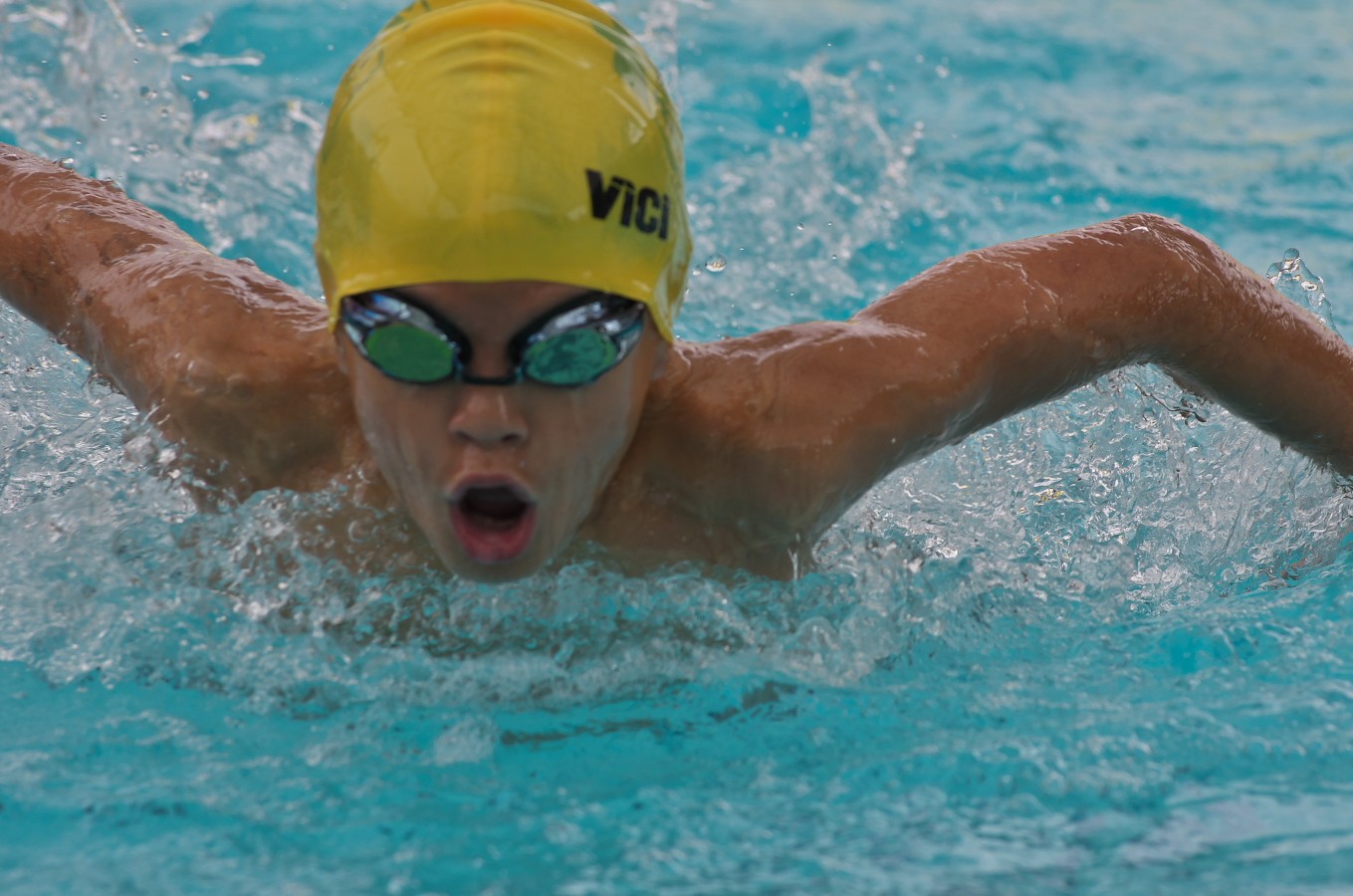
Processed:

Dan.
|
|
Forum: Photographic Technique
03-21-2020, 11:47 PM
|
| |
I've stopped shooting junior sports. Recently, an old shot from Aug 2011 came to mind. I like it because all 4 feet in the shot are off the ground and I think it's definitely a dynamic pose.
When I looked at it again, I realised it was under-processed, so I've made another attempt to process it. It was shot on a rainy, gloomy day with a K20D, in AF-C mode, and DA* 60-250/F4. The shot was soft because focus was slightly off and it was at least 1EV under-exposed. 1/800s, f/6.3, ISO320, 200mm FL. With the EV boost and some dodging, this would be equiv. to shooting at ISO800, the effective ISO limit for the K20D. First off, the version I put in my PF gallery in 2011:

Here's my 2020 version:
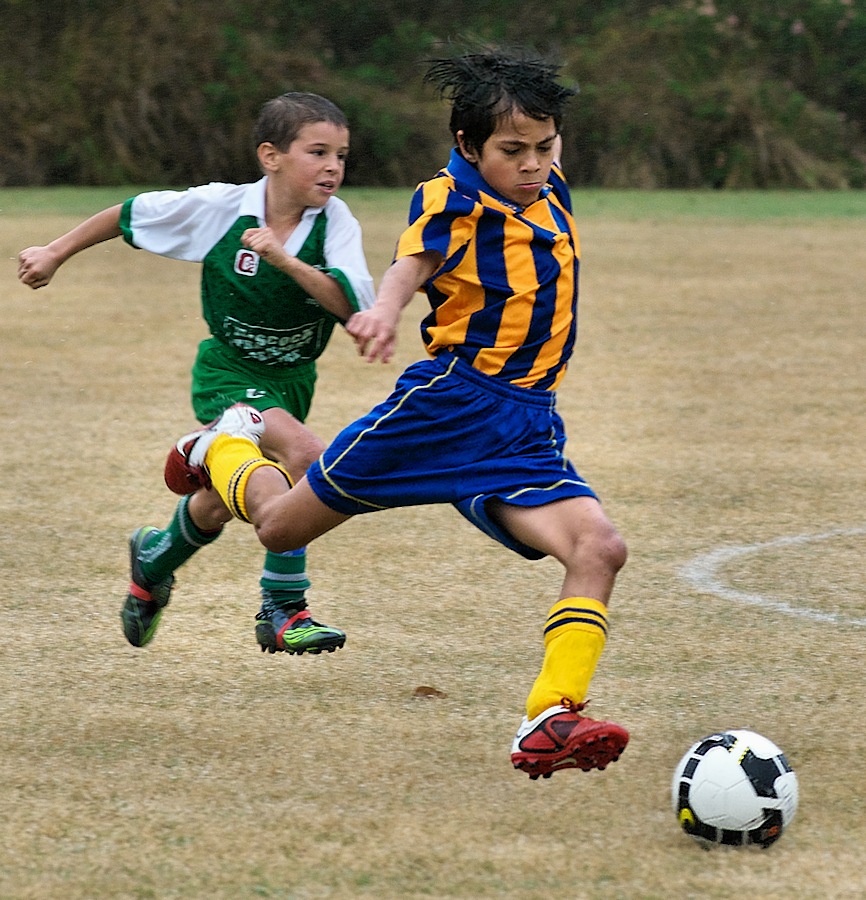
If you want to have a go at PP it, here's the PEF: https://dl.dropbox.com/s/dfwd27czth7y2em/imgp2907.pef
Dan.
|
|
Forum: Photographic Technique
02-27-2020, 06:51 PM
|
| |
ThorSanchez, I'd like to offer constructive comments on your 2 preseason shots. For 7 years, I shot stills of junior soccer and some futsal, then switching to 3 yrs of videoing. So I've got some experience in this area.
Shot 1. I can see what you trying for here, but as a general rule, I cull shots that don't include the ball in-frame in soccer or futsal shots. The presence of the ball, to me, seems vital in anchoring the dramatic situation. Perhaps because the players' distance from the ball in this chase situation directly affects the urgency of their chase.
Shot. 2. I believe the essence of sports shooting is to convey the drama of the interactions. So, while 1 player performing a beautiful kick on a ball is interesting, a shot with an intercepting player in close conflict with this player, and the look on their two faces usually makes a much better shot. This is stuff that the bystanders either don't notice or remember. There's so much going on in a game that bystanders can't concentrate on detail and it would otherwise flow past them unnoticed. But you, as the photographer, either anticipate that a dramatic interaction is likely to occur, or you've been lucky to capture it anyway.
I believe you need to crop to the players of interest. In your 2nd shot, the player "97" appears not to be directly involved in this interaction, and the large areas before and to the right of the two interacting players doesn't really convey much. So I'd crop much closer. There's not much I can do with the resized JPG compared to a full-sized raw file. So what I did was just mask the two players, including the ball, and selectively apply 1px radius Focus Magic deconvolution sharpening to them, not the grass.
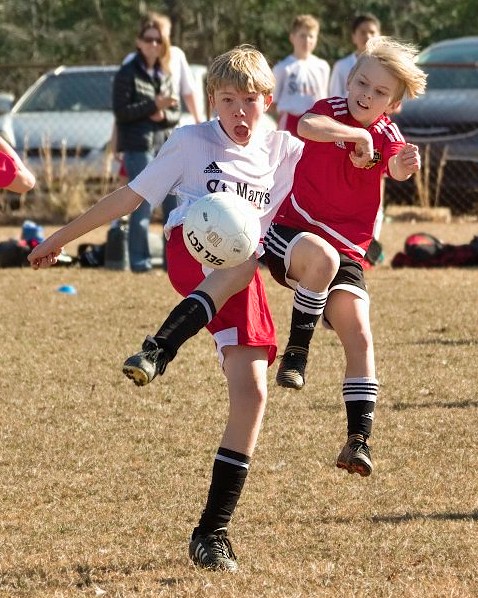
Dan.
|
|
Forum: Photographic Technique
11-02-2019, 01:25 PM
|
| |
Our family recently went for a 2 week holiday in NZ to visit relatives. I was not expecting to shoot sports. So with my K-3 I only took Pentax DA 17-70/F4, FA 50/F1.7 and DA 35/F2.4 lenses. I used these with a Sigma 530 Super flash gun to shoot a 1st Birthday event in a hall.
While in NZ, my 17yo son was asked did he want to train with a local U18 rugby team ((Pukekohe Rugby Football Club - Home). Rugby is very, very popular in NZ. He had just started playing rugby at school in 2019, (he previously played soccer for 10yrs), but only played it for a few games before suffering a partially-dislocated shoulder injury early in the season.He hasn't been able to play rugby since then. And he hasn't done any running or track work,concentrating instead on the field events of Discus, Javelin and Shot-put.
He accepted the invitation and attended a couple of team training sessions that week. He had to borrow boots, socks and a team jersey for the match on Saturday. The coach placed him out on the wing.
Since he had not played with this team before, they were unfamiliar with him and he didn't receive the ball much. But in one of the few times he got to touch the ball, he took off and scored a try. This made him happy because I think he was a bit worried that he might embarrass himself in front of his new teammates with his lack of experience. He was lucky because the linesman missed seeing his foot touching the sideline.
I'd never shot rugby before. Since 70mm was my highest FL and since my son was out on the wing, I decided to stand close to the goal-line on his side of the field and hope that he'd run towards me at some stage. I was set up with 9-point AF which proved problematic at the start of this sequence, as the centre of frame had no players. I've used FocusMaqic to improve these early shots a bit, and they're included here to provide context. My lack of experience with rugby shooting is shown in how I didn't anticipate how quickly I would need to pan, so the last shot only has him partially in-frame. But I think the sequence captures the drama well. The early shorts are heavily cropped due to working at a large distance with 70mm FL.
1/1600s, ISO250-320, f/5.6, FL70mm down to 17mm at the end, AF.C 9-point.
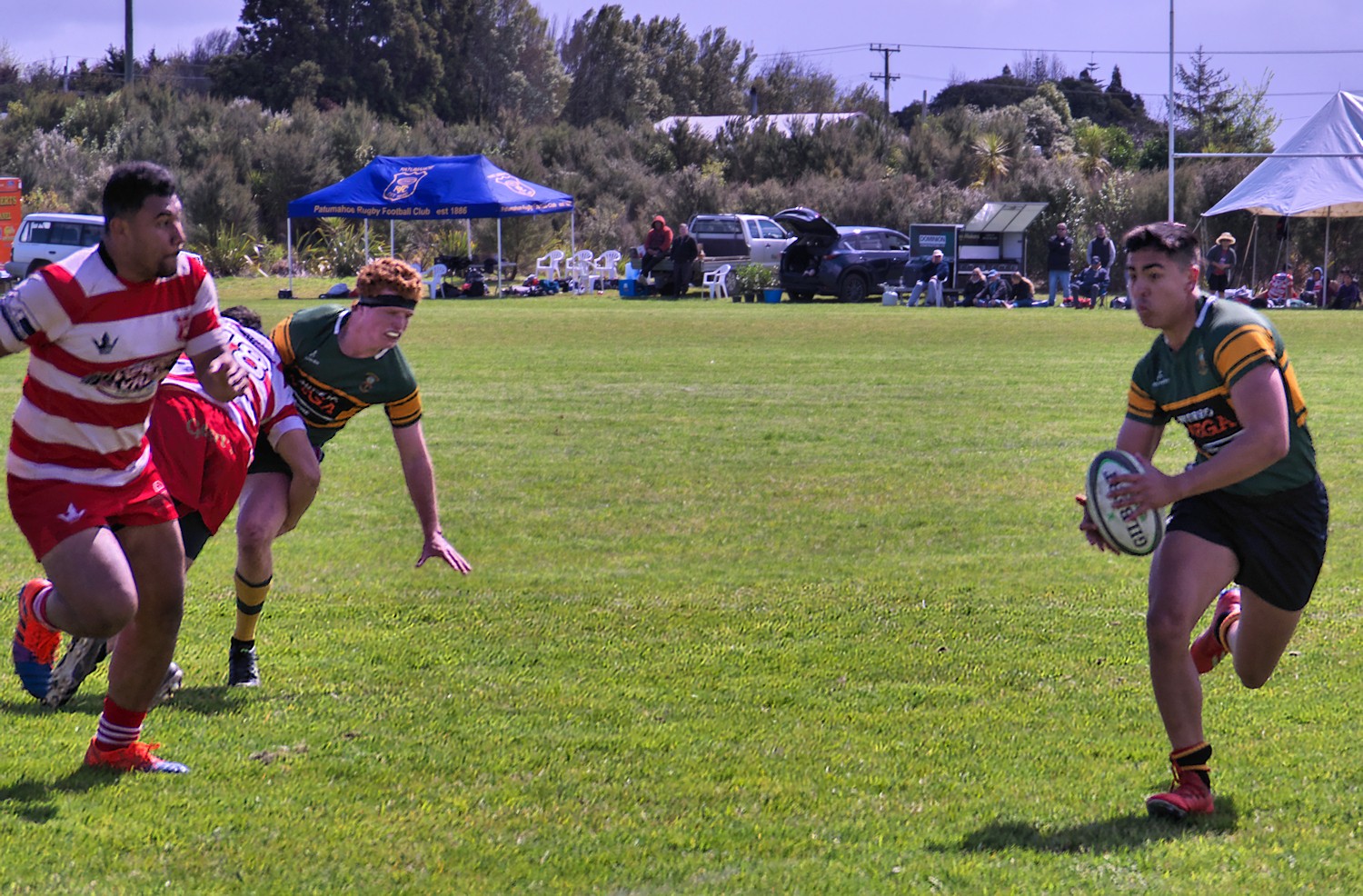
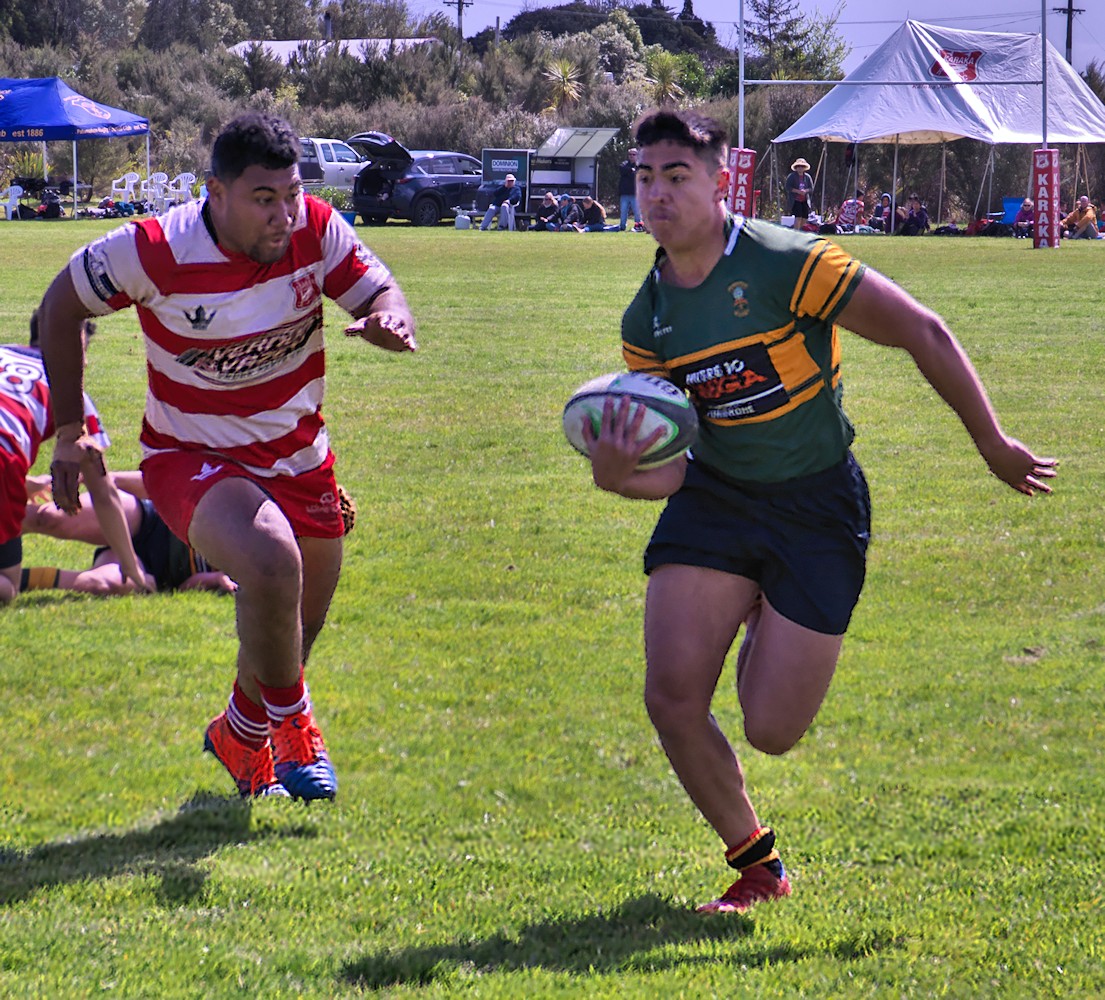
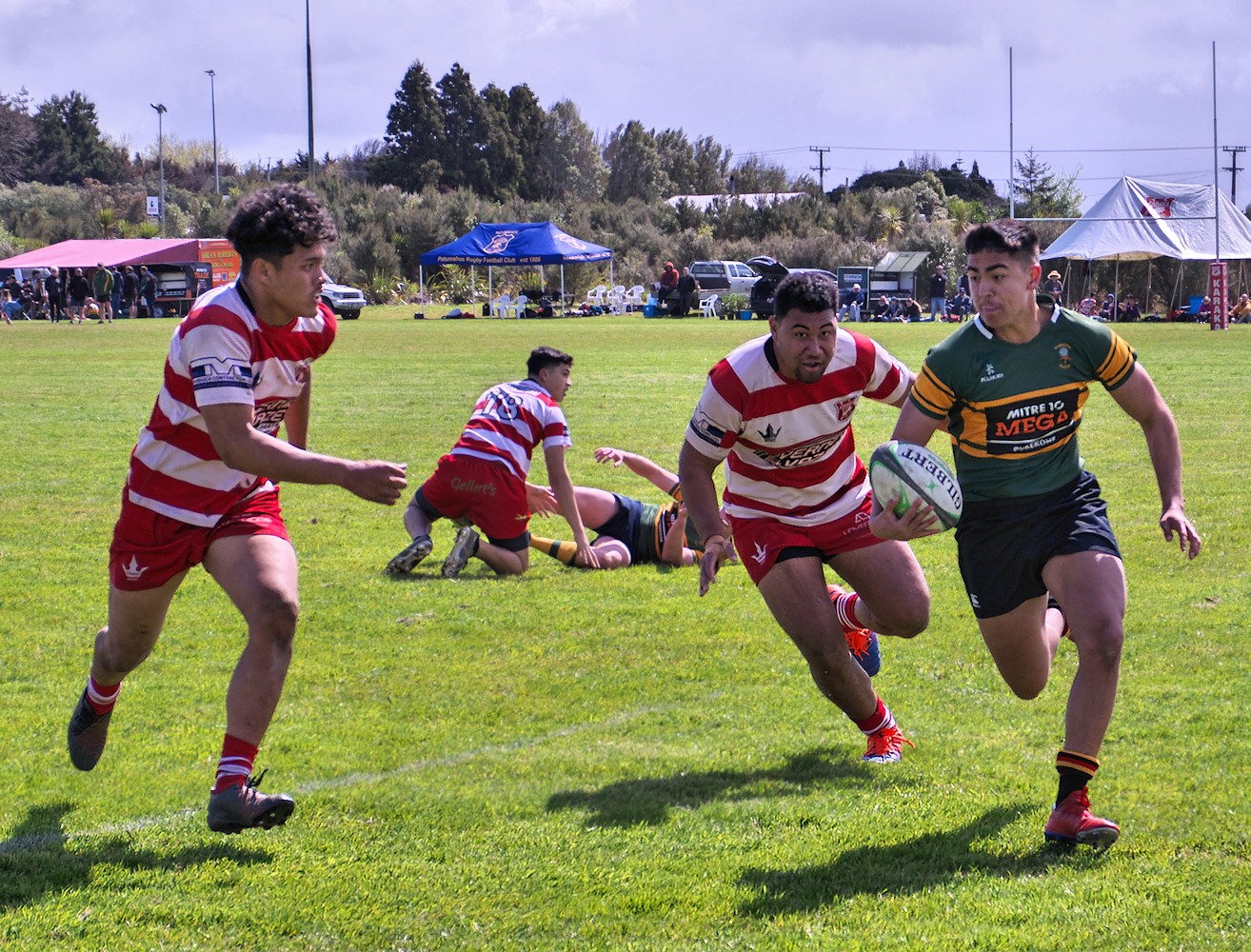

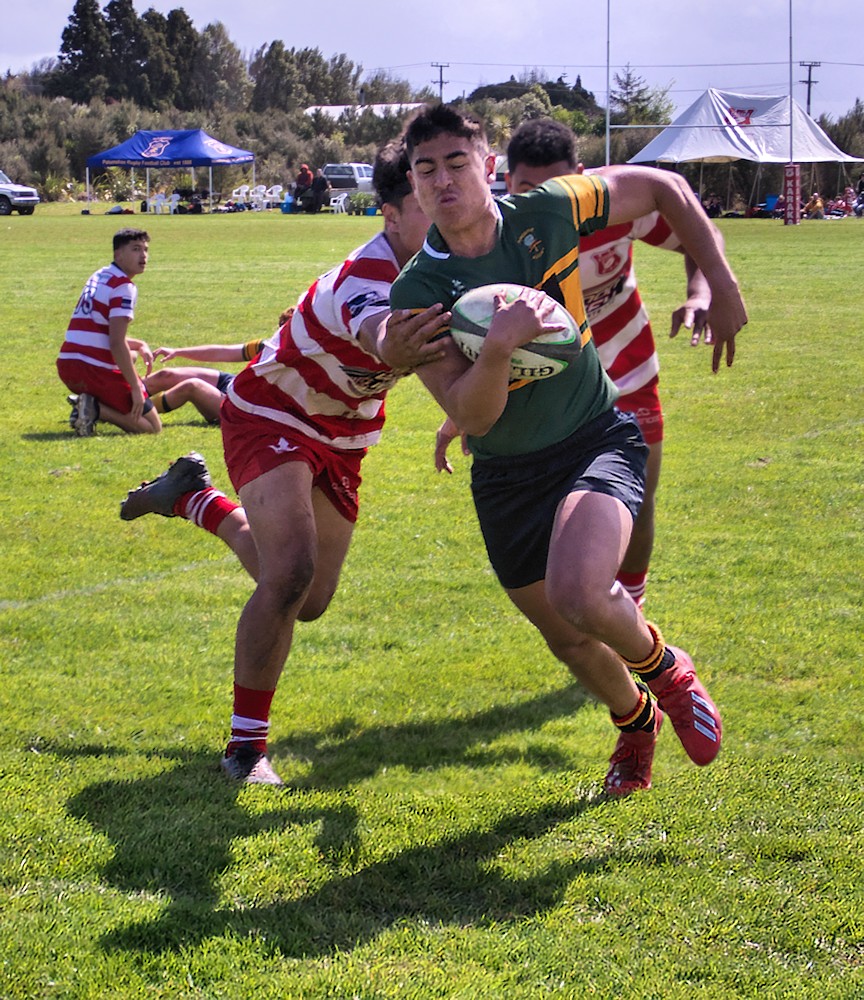


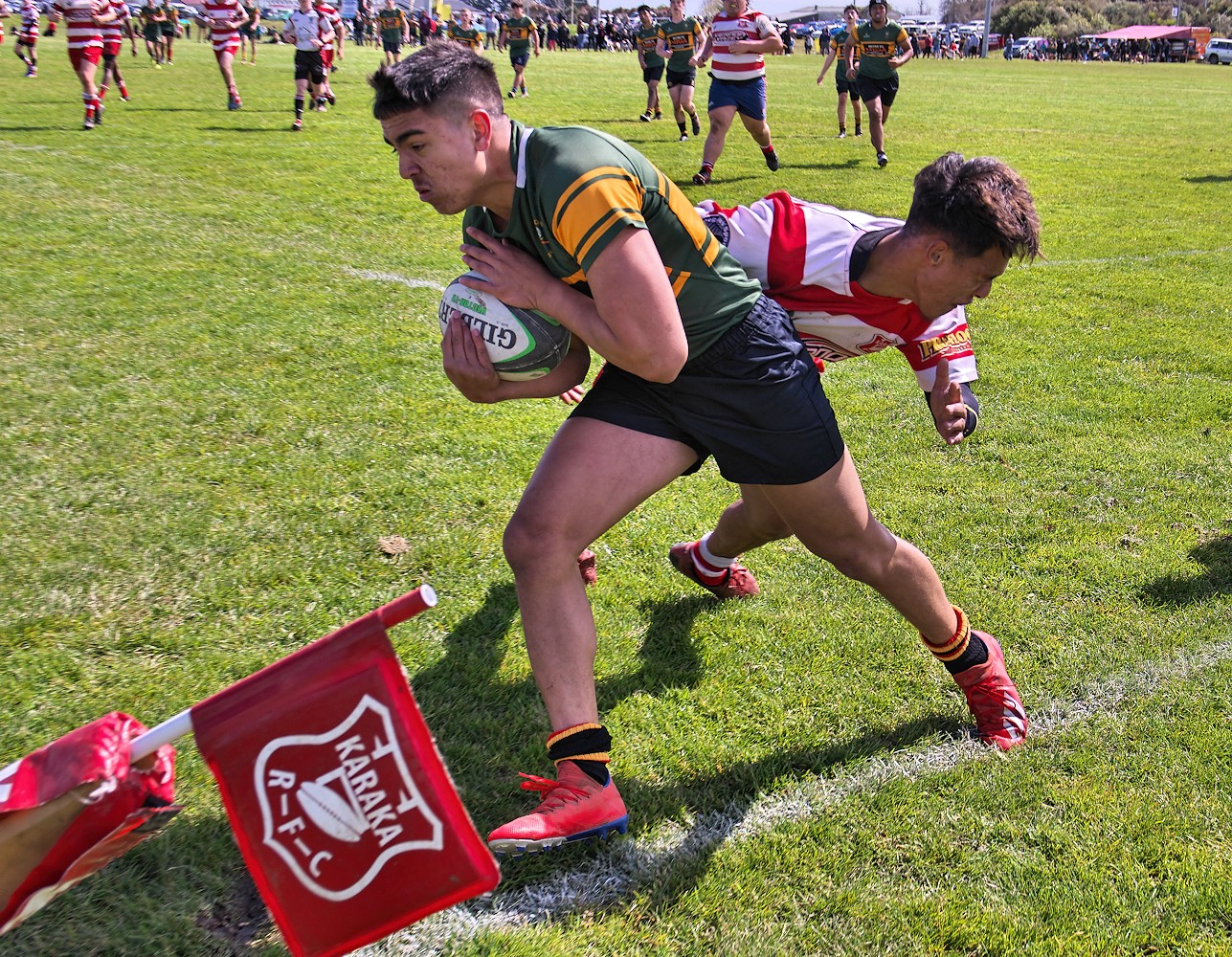
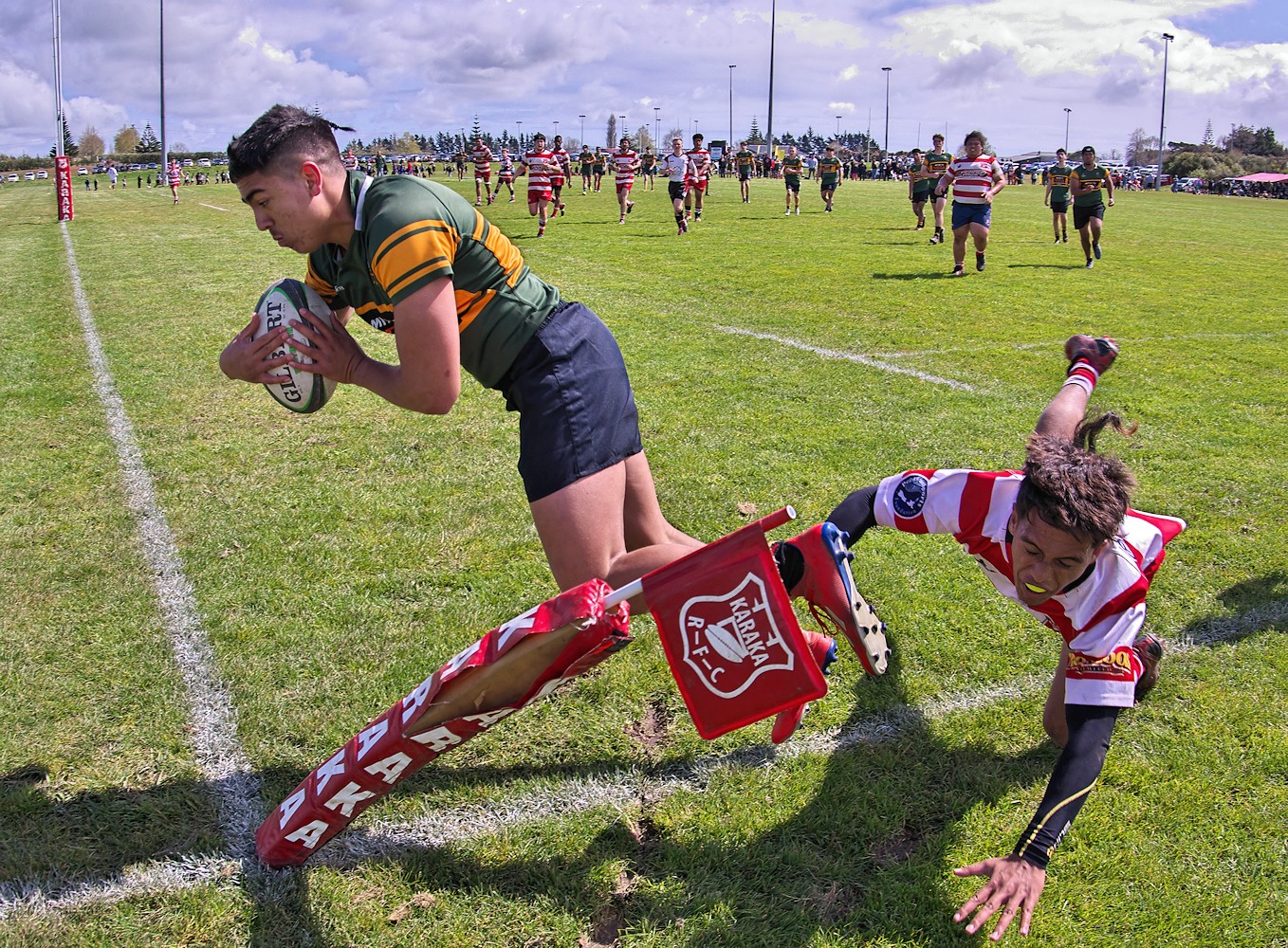
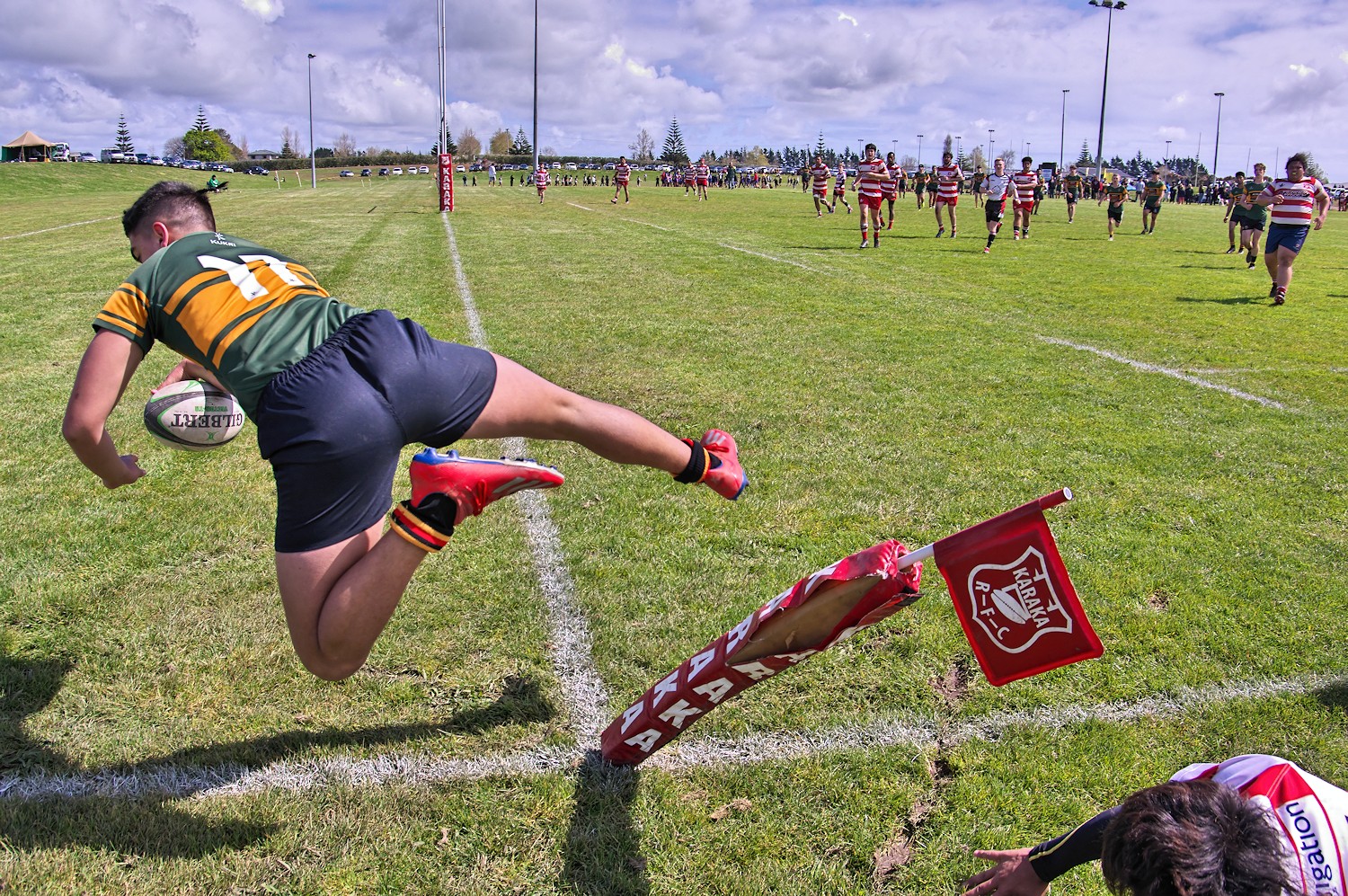
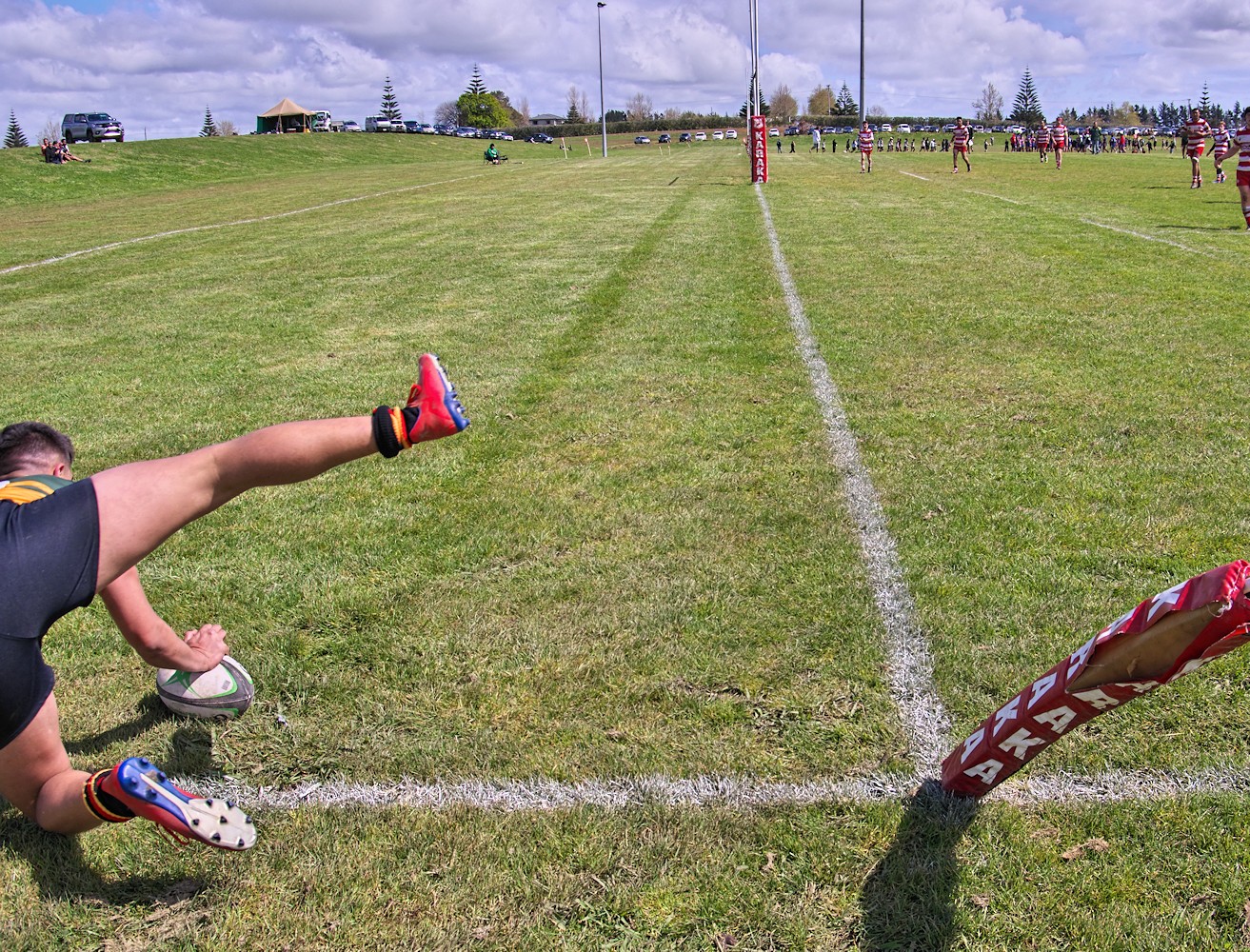
Dan.
|
|
Forum: Photographic Technique
04-07-2019, 05:02 AM
|
| |
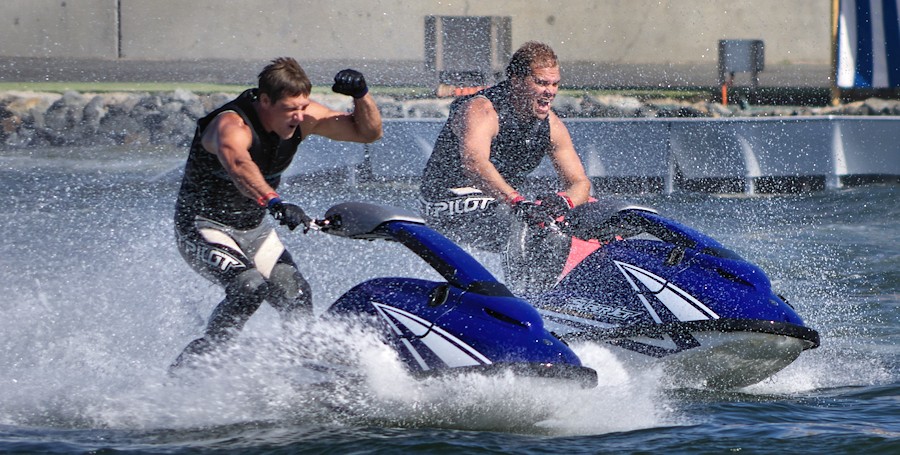

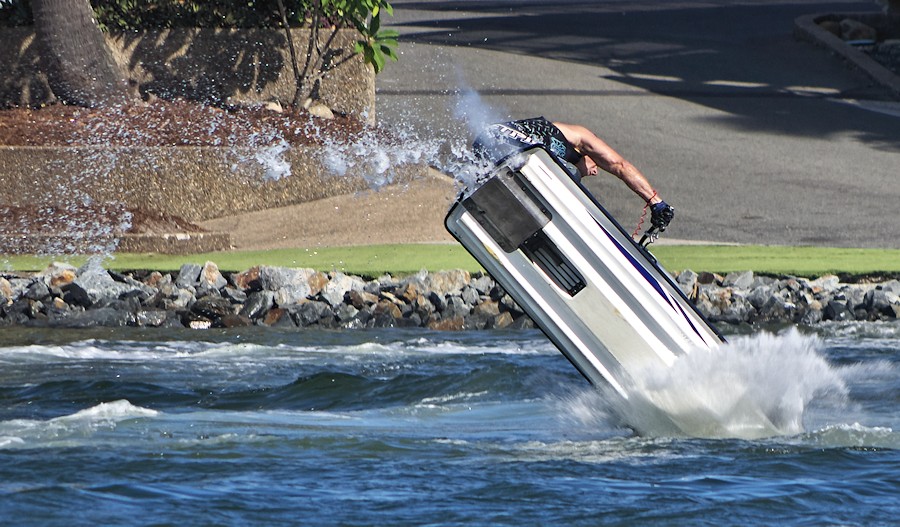
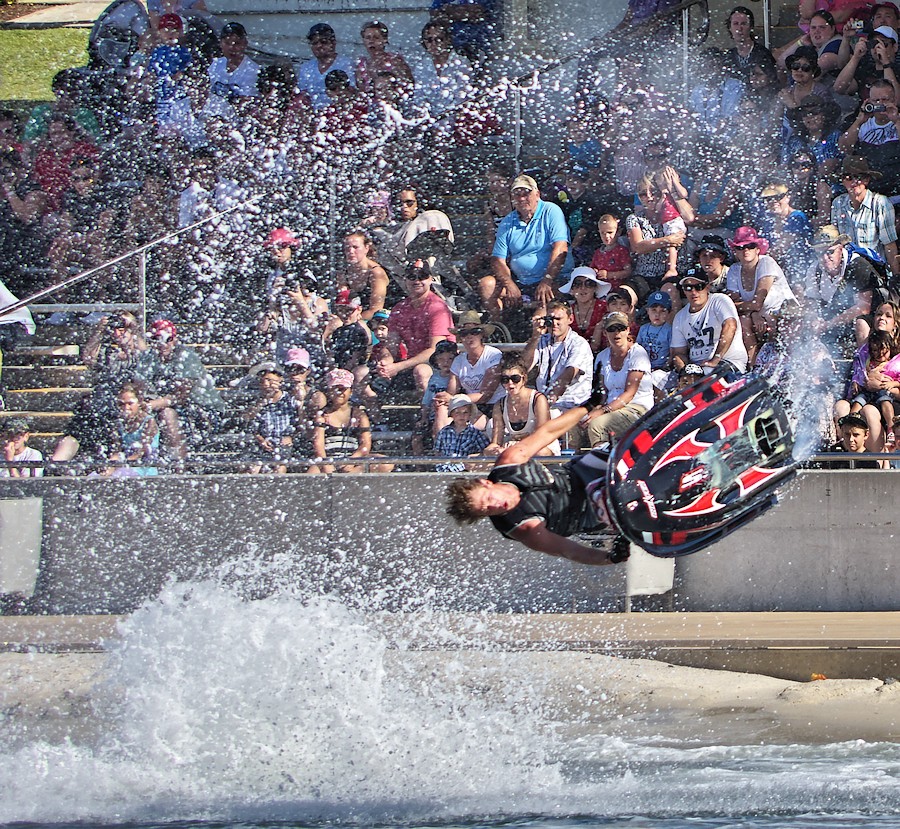
---------- Post added 07-04-19 at 22:07 ----------
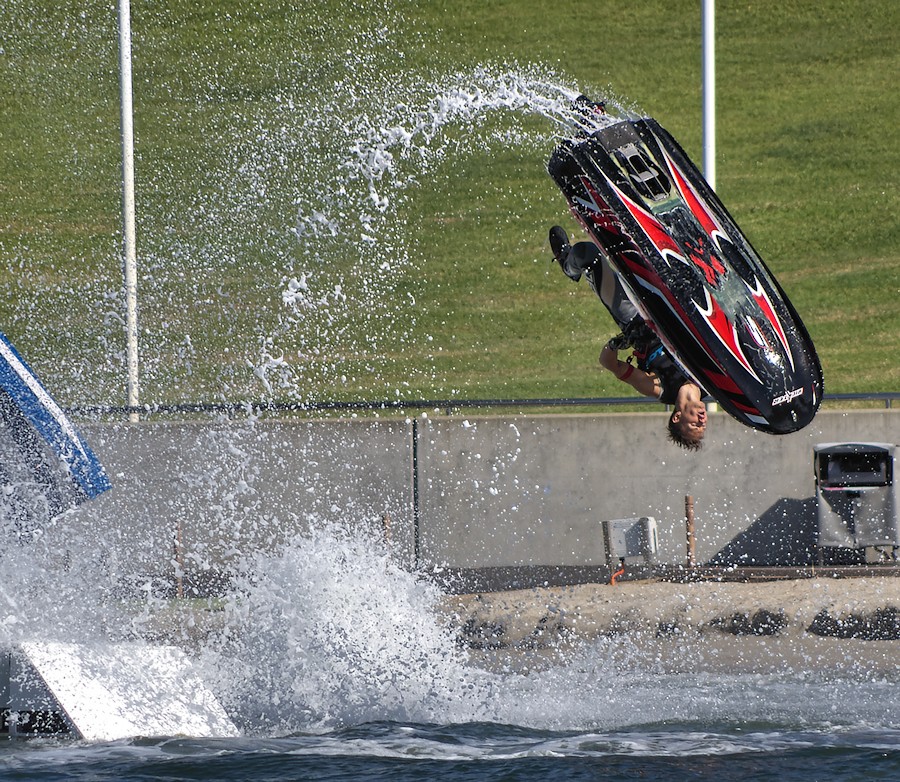
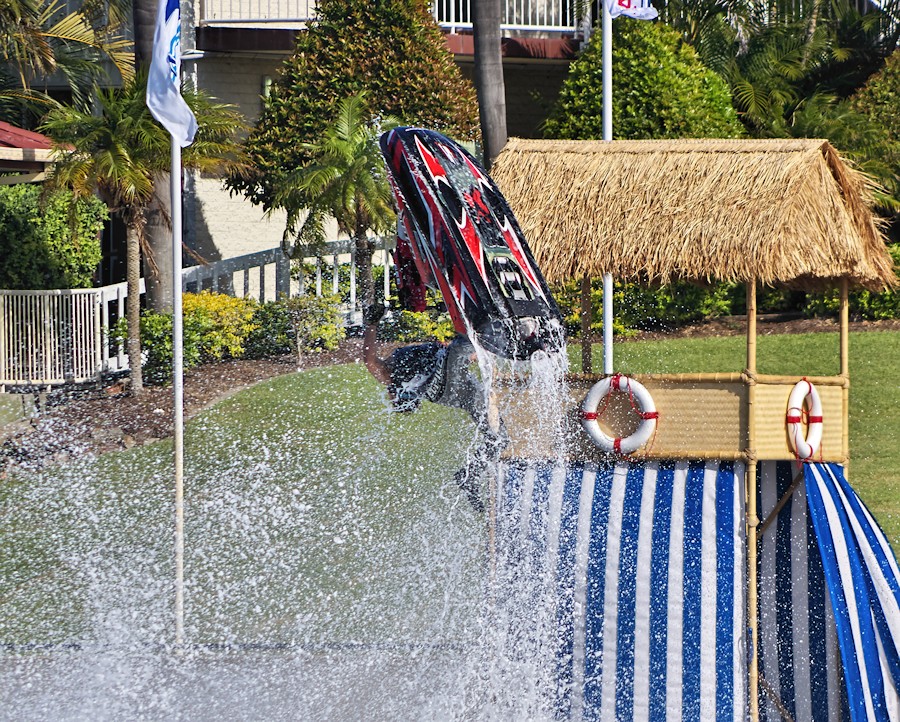
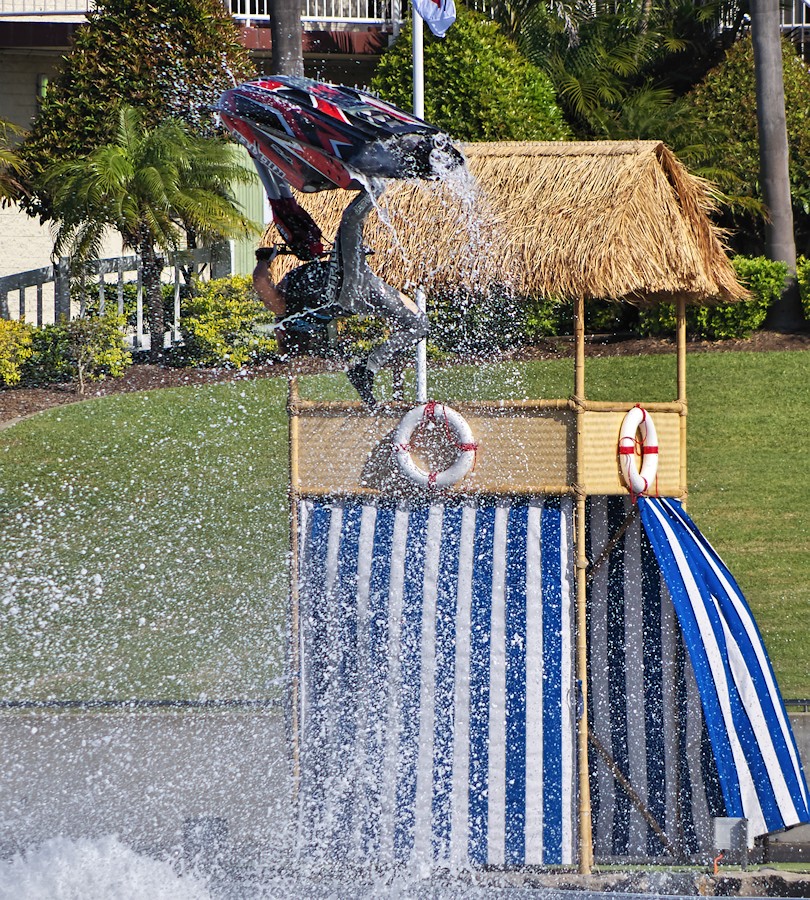
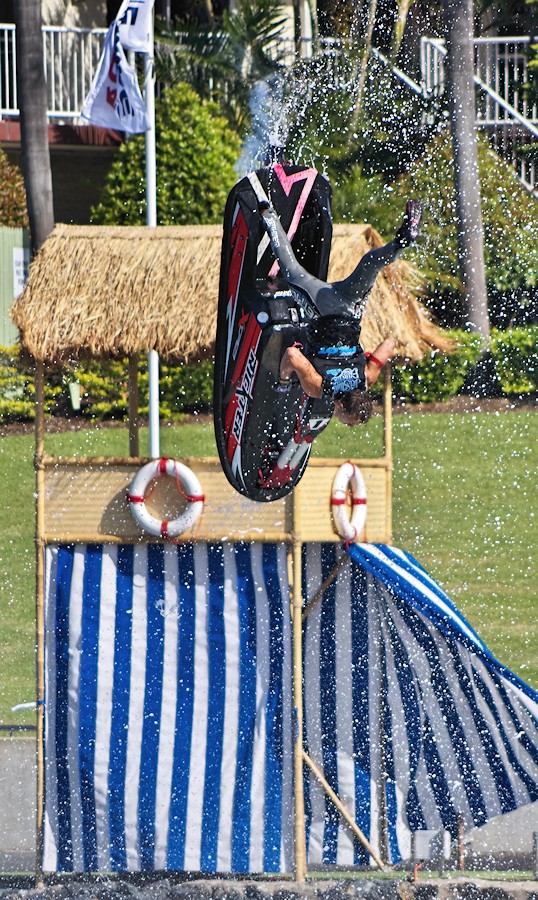
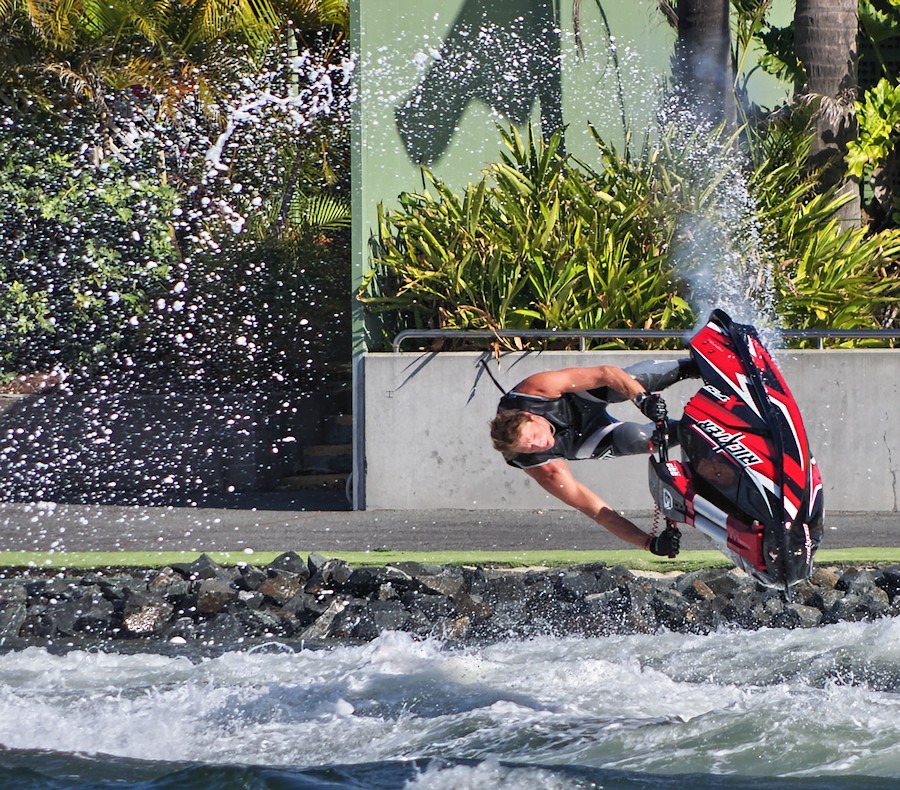 |
|
Forum: Photographic Technique
04-07-2019, 03:26 AM
|
| |
Some old stuff. 29 Nov 2011. Jet Stunt Extreme Show at Seaworld, Gold Coast, Queensland. K5 + DA 55-300/F4-5.8 @300mm FL. All 1/1000s, f/6.3, ISO160. I was at quite a distance (across the lake) so the cropped frames are approx. 1/4 of the original frame area. This lens is a bit soft at 300mm compared to the DA* 60-250 at 250mm, but I wanted a light compact lens to carry around all day. SilkyPix Developer Pro 6 + PSP X7.
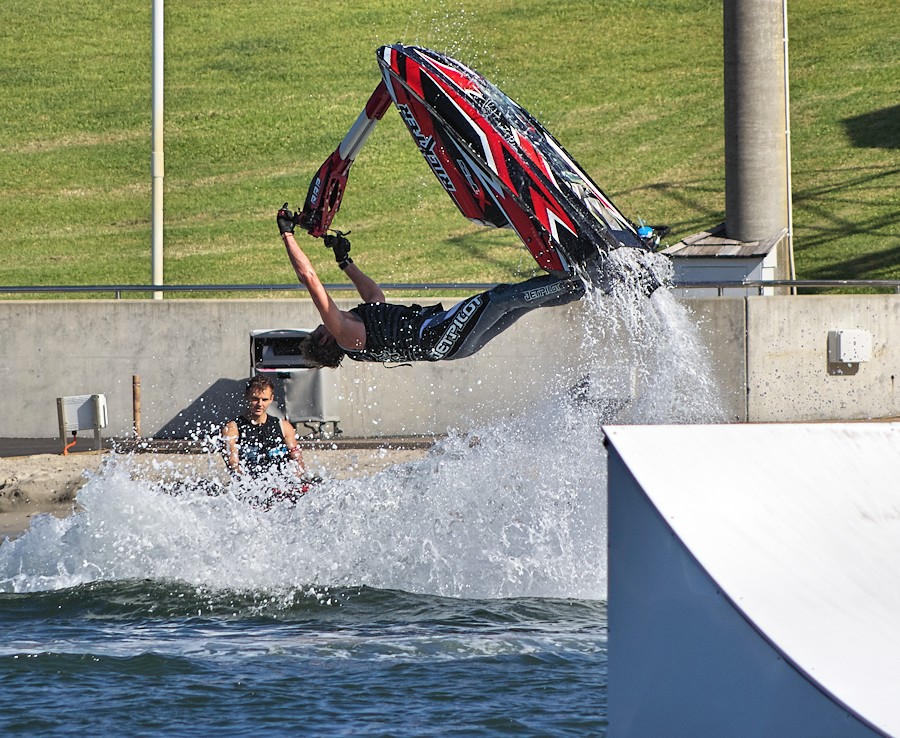
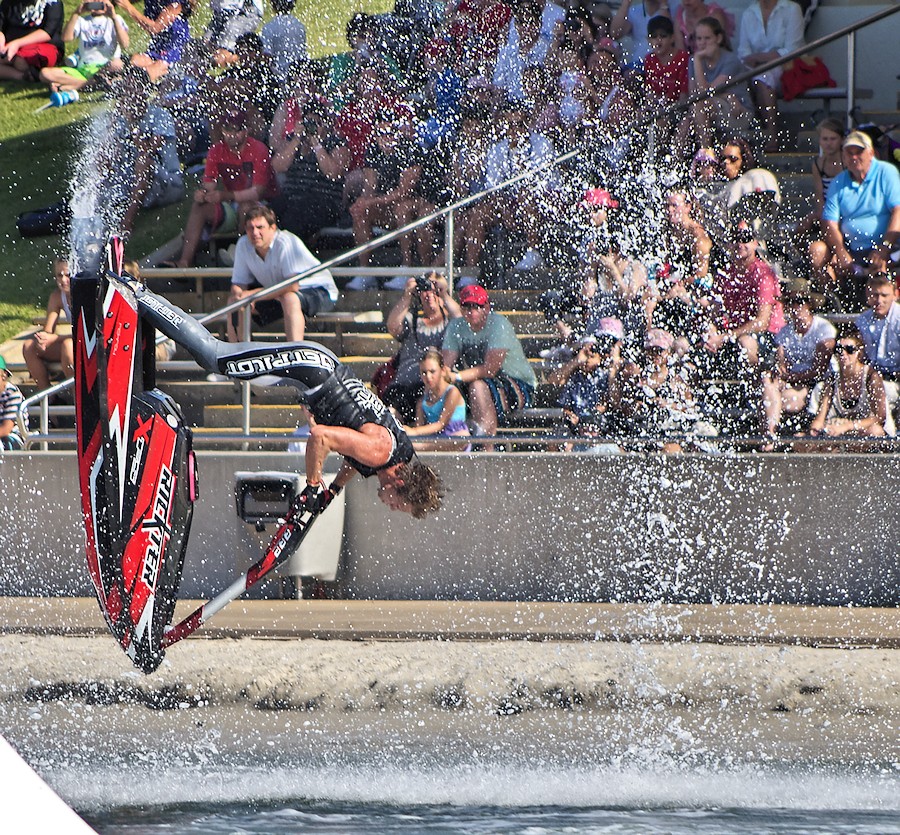
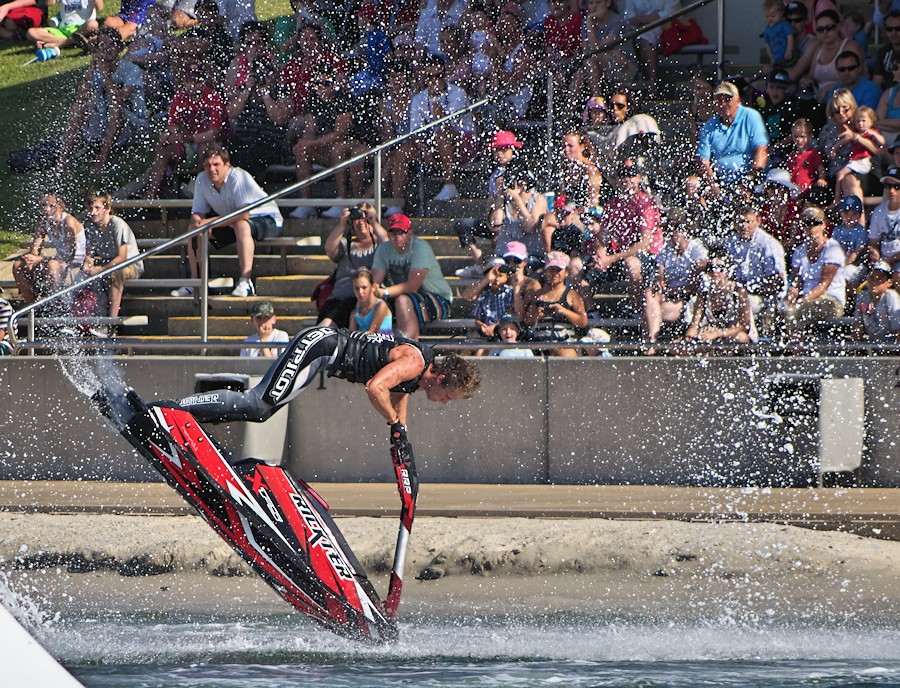

Dan.
|
|
Forum: Troubleshooting and Beginner Help
03-14-2019, 06:26 PM
|
| |
I don't normally shoot DNG+. But here are some development comparisons. I've got SilkyPix Studio Developer Pro v6. The US Marines were visiting Brisbane and I photographed this vessel from across the river using a K3 + DA*60-250/F4 @ 250mm FL, 1/320s, f/4, ISO640. 21 Jun 2015 17:00:28. Sunset was 17:01 on that day so I was shooting in lowish light.
"Natural Fine" sharpening preset. Comparing the JPEG development sharpening settings of 31%, 0.2px radius, 8Lv threshold (yours) to 70%, 0.6, 1 (SP's "Original Image" preset).

(All comparisons are at 100% zoom level. I suggest you open these comparison images of approx. 1680x1000 in a new browser tab, and zoom in to 100%, if necessary.)
At 100%, you can see the noise here. I'll compare the "campaign ribbons" at the top LH. I think you could have used more JPEG development sharpening here.
Next, the "Natural Fine", 100%,0.6pc,1LV version vs "No Sharpening" (in SP), saving as 16-bit TIFF (no output sharpening) for further processing in PSP X7. In PSP, with the "Focus Magic" (deconvolution sharpening) plugin set to a radius of 4px, and PSP USM sharpening of 70%, 0.6, 1. (I often use this processing combo, and let FM chose a suitable radius based on its analysis of the initial sharpness of that part of an image.)
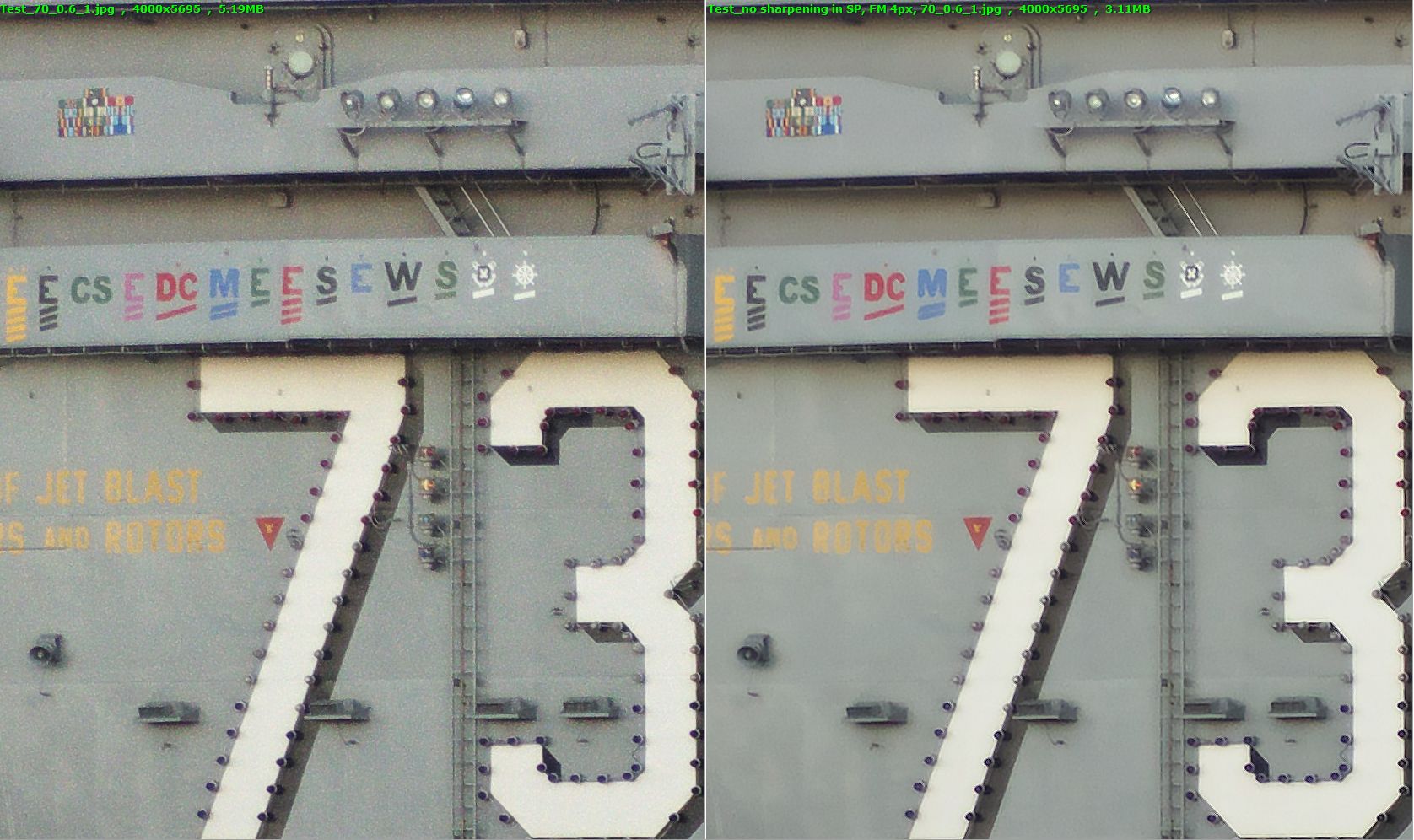
Even though devolution sharpening usually increases the noise, the overall result shows less noise here, and the sharpness is still acceptable.
Finally, no sharping in SP -> TIF to PSP, no FM, just USM of 200%,0.6,1 vs the same but including FM 4px and USM of 70%, 0.6,1.
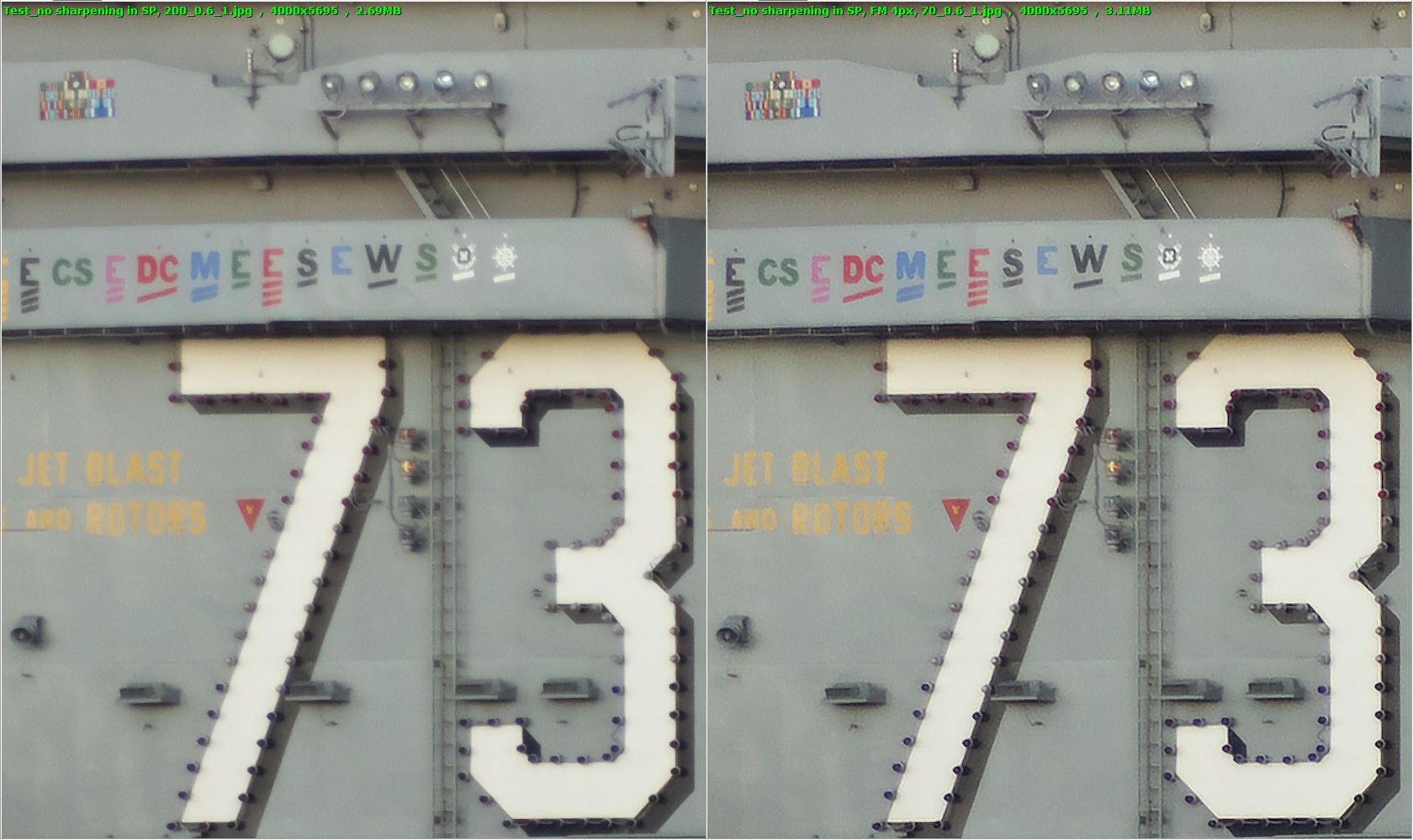
You can see that the higher USM was not sufficient compared to the difference FM made here.
Finally, here's the full image. (I've only worked on the sharpening, not the colouration or TRC.) No sharpening in SP. In PSP, USM 200%,0.6,1, resized to 562x800, USM again of 100%,1,1.
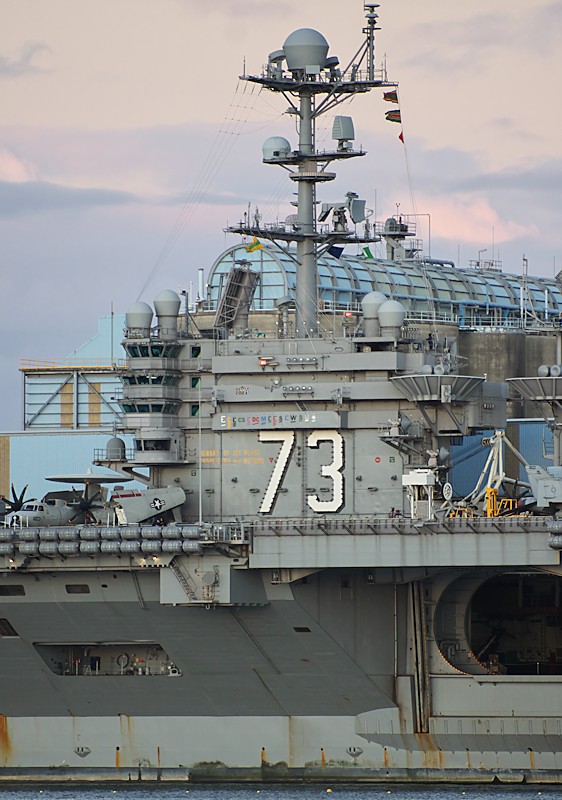
If you want to work with the PEF, here's a dropbox link to it: Dropbox - K3_63531.PEF
Dan.
|
|
Forum: Mini-Challenges, Games, and Photo Stories
10-08-2018, 12:22 AM
|
| |
Thanks for describing your processing. We're all here to learn something new. And the day that stops - well life will have lost its interest.
How do you think they get that exaggerated motion-blur effect you often see in commerical images?
Dan.
|
|
Forum: Mini-Challenges, Games, and Photo Stories
10-07-2018, 03:25 PM
|
| |
Typical of Brisbane. Brisbane has only half the cloud cover of say London. From World Weather Online | World Weather | Weather Forecast
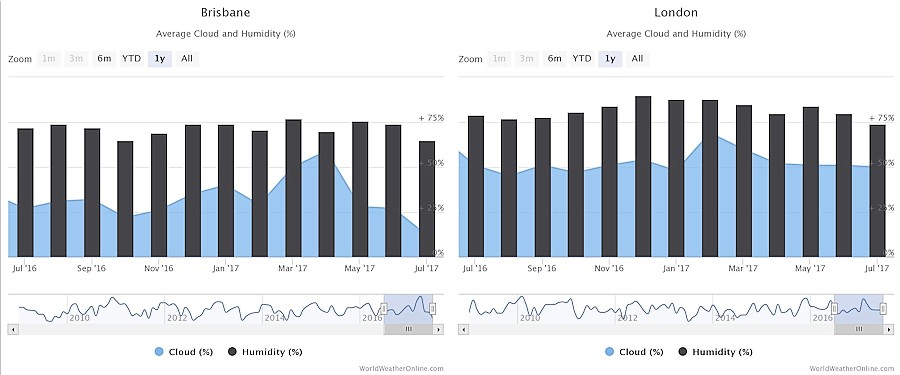
Queensland, the Australian State of which Brisbane is the capital city, has the official title of "The Sunshine State" to differentiate it from the other states. Queensland has the highest rate of melanoma in the world because so many people here are UK & Celtic descendants. From Melanoma facts and statistics - Melanoma Institute Australia
Australia and New Zealand have the highest melanoma rates in the world with Queensland incidence rate of 71 cases per 100,000 people (for the years 2009-2013), vastly exceeding rates in all other jurisdictions nationally and internationally.
Dan.
|
|
Forum: Mini-Challenges, Games, and Photo Stories
10-07-2018, 02:34 PM
|
| |
The winner is D1N0. I like his idea of combining both images. It's a pity I didn't have a 3rd image, either between the other 2, or to the right of them - a 3-runner sequence would have been cool.
The colours are acceptable, but still a bit wonky according to my memory, but remembrance of colours is unreliable.
Notice the section inside the yellow rectangle in the top LH corner. This section isn't in either image and has been fabricated. Since it's in the background, it's not that significant and you probably wouldn't notice the deception during a casual inspection.
D1N0, would you like to explain what processing steps you performed?

Two honourable mentions. The shadowed side of the runner and the reflection off the track made the colours difficult. Lighten/correct this and it tends to make the track too pale. But taking the runner out of the background means than the runner can be rendered more satisfactorily - perhaps it's just not having the track colour appearing around him.
Glenn5995
"A runner in the clouds" - an aspirational representation? Or an allusion to Hermes/Mercury?
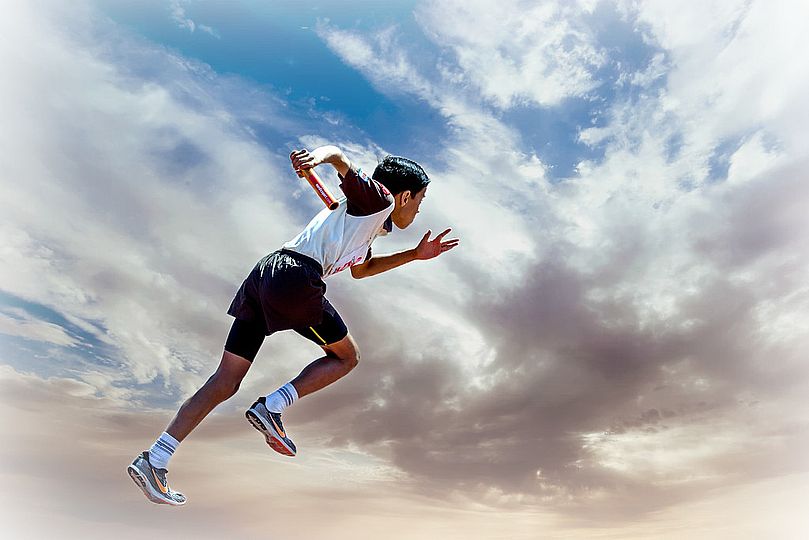
todd
Todd can you explain how you produced this effect? It's a pity that there's not more motion blur apparent for the left hand and for the head.That would have intensified the impression of speed.
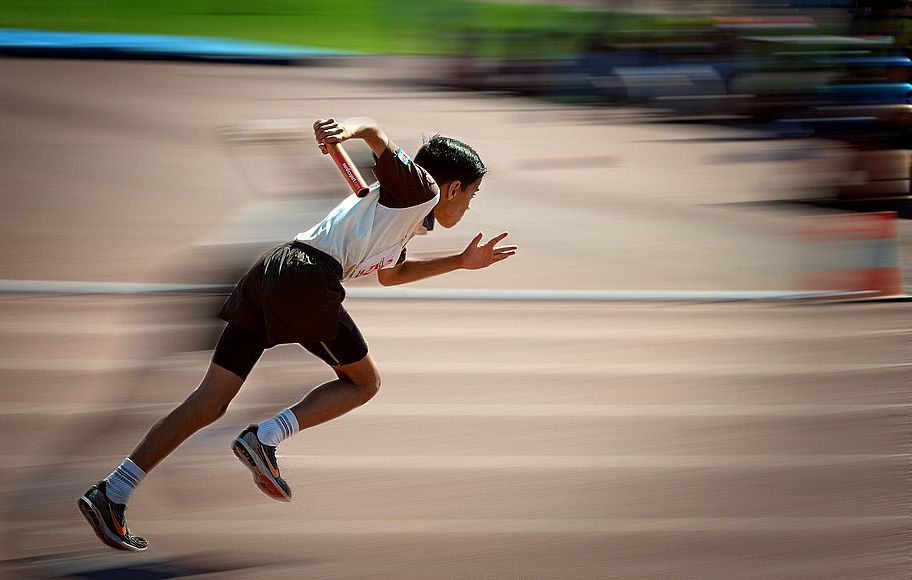
Dan.
|
|
Forum: General Talk
10-06-2018, 02:32 PM
|
| |
Fizzio, thanks for the clear and informative explanation.
Dan.
|
|
Forum: General Talk
10-03-2018, 05:14 PM
|
| |
Kayelle, in another forum, has said:
Would be hard to know without further muscle testing, however my thought are that it's semimembranosus (green arrow) with semitendinosus over the top (red arrow, more defined part at the bottom of the muscle). 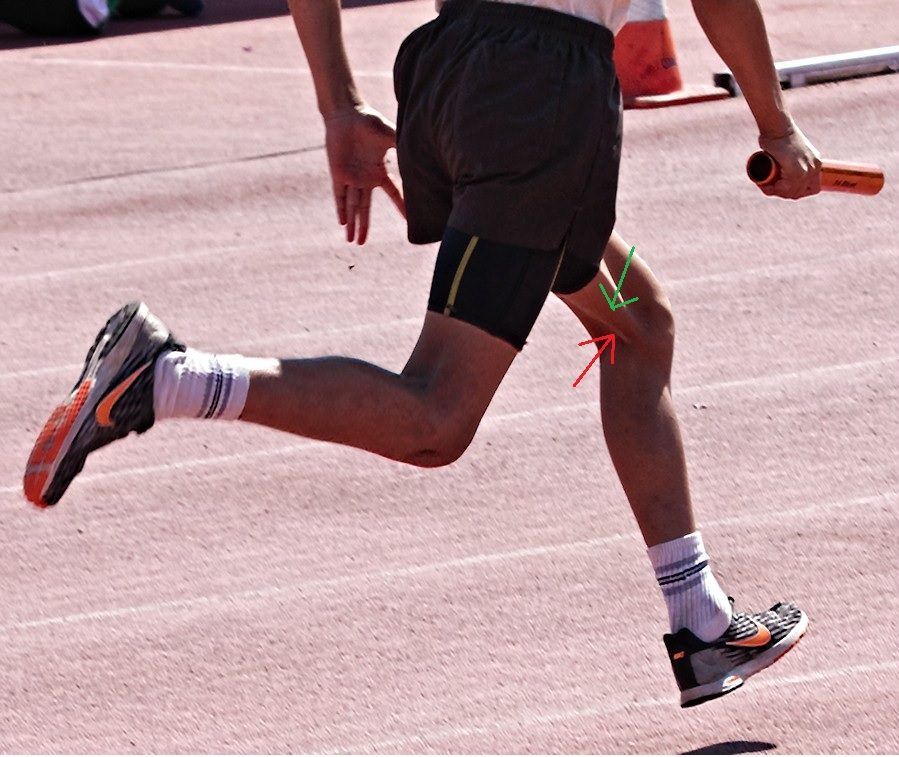
I'm sure a Sport Physiotherapist would know the answer to this.
Dan.
|
|
Forum: Mini-Challenges, Games, and Photo Stories
10-03-2018, 01:37 PM
|
| |
I'm enjoying the contributions so far. When the contest ends I'll be asking a few questions on how some contributors got their result.
I've posted part of another image from the start of this race in the General Talk forums. I've got an anatomy query about a prominent inner-thigh muscle in the image. So it's not a photography-related, but it has got me curious. I tried to look it up myself, but the muscles in the human thigh look complex in the diagrams and I'm not sure that I've identified the correct one. If you've got any medical knowledge talk a look.
Anatomy Question - PentaxForums.com
Dan.
|
|
Forum: General Talk
10-03-2018, 01:27 PM
|
| |
I've currently got a Post-Processing challenge running. (PP Challenge #271 - The Relay Runner - PentaxForums.com). From the same relay race start as featured in the challenge here's part of another image:
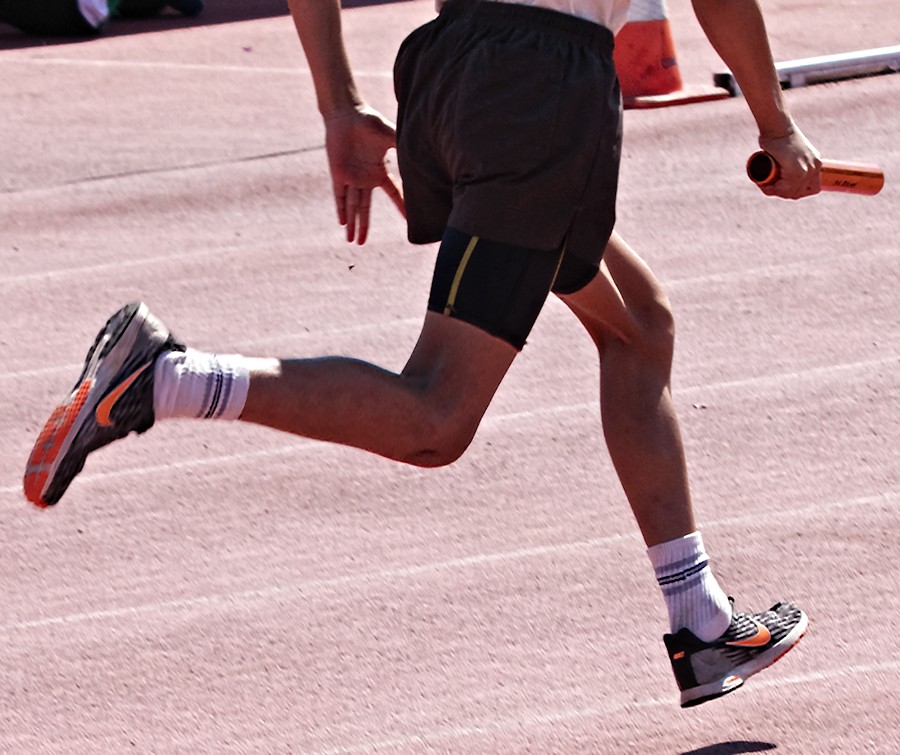
I don't normally keep this type of running image as I prefer shots with the arms raised high. But I noticed that an inner thigh muscle was quite noticeable in the shot. (I don't think it's a trick of the light.) I'm hoping that someone who knows anatomy can confirm that this is the Adductor Longus muscle?
Dan.
|
|
Forum: Mini-Challenges, Games, and Photo Stories
09-29-2018, 12:29 AM
|
| |
Hello and welcome to the Pentax Forums Post-Processing Challenge!
For those that are new around here the challenge is based on a person being selected from the previous challenge to provide a full size photo (typically in both RAW & jpeg). The host provides any details and expectations on the challenge like what they are looking for, total number of submission per person taking the challenge or maybe a 'just go for it'.
Usually the challenges run for about a week or so with timings aimed to be flexible as we all have lives outside the forums. At the end of the challenge the host reviews the submissions and chooses their favourite. That person then becomes the next host for the following challenge. Some hosts also provide PP feedback too but this is an individual thing so it's welcome but not a must for the host.
Hopefully you take the opportunity to join us and see how many interpretations can be made from the one image.
Some details about this image: From Little Athletics Queensland 2013 South-East Queensland Regional Relays. This was the start of the U13 Boys Distance Relay race. There are 4 different relay legs: 200m, 200m, 400m, 800m. There were 2 U12 runners, including my son, the 1st runner (normally an U12 400m runner), "running up" in this older age bracket in the two 200m legs to make up a 4-boy team. (They set a new LA SEQ U13 record in this event.)
K-5, DA*60-250/F4 @ 80mm FL, 1/1000s, f/6.3, ISO160, -1 EVcomp.
There are two shots. You can use either. The 2nd shot is either 4 or 6 steps later than the first. (The EXiF shows 1s later.) Unfortunately, this was a big meet and the trackside was crowded so I couldn't position myself any further forward in front of the runner or with the sun behind me.
The embedded JPEGs (no processing) and the PEFs:

https://dl.dropbox.com/s/n11pngxk7y8hju1/K5_89781.PEF

https://dl.dropbox.com/s/vr6m8kve2w7rzbo/K5_89784.PEF
The red tartan track material reflects coloured light up onto the runner. It confused the AWB. I couldn't get a decent colour rendition when developing the PEFs so I B&W them. Perhaps you can do better.
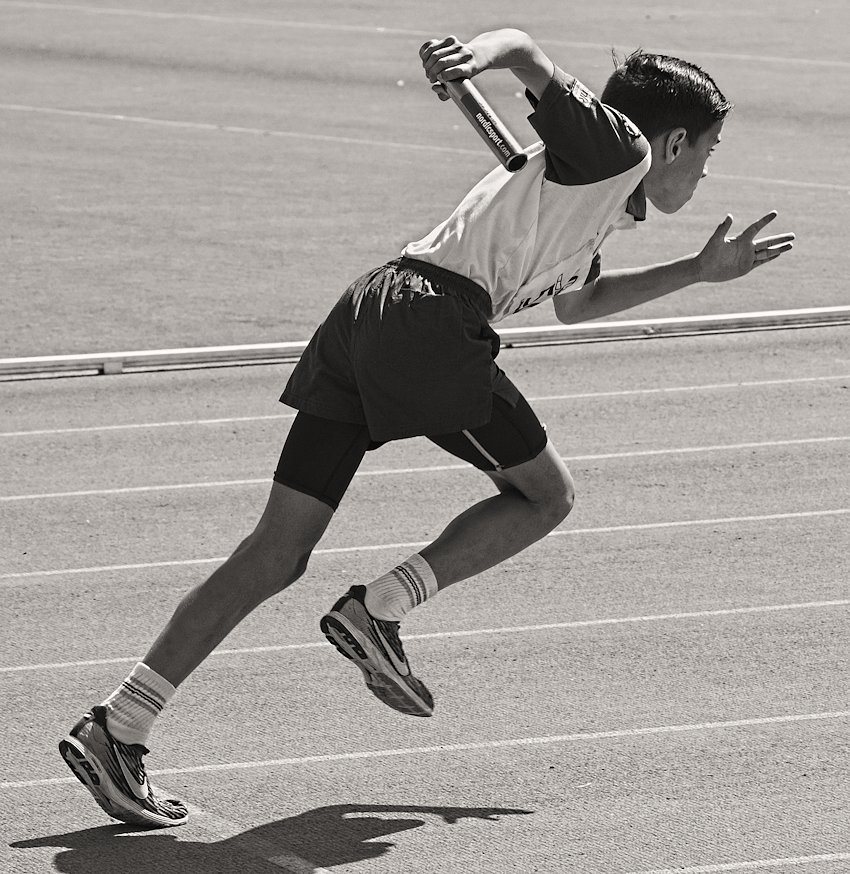

Dan.
|
|
Forum: Mini-Challenges, Games, and Photo Stories
09-28-2018, 11:39 PM
|
| |
I'd like to host the next challenge. I've got a raw image with tricky WB that I'd like to see improved.
Dan.
|
|
Forum: Mini-Challenges, Games, and Photo Stories
09-16-2018, 05:40 PM
|
| |
Done in SilkyPix Developer Studio Pro 6 & PSP X7. 3 layers: Main image; Sky; Rocks/Trees/Crowd.
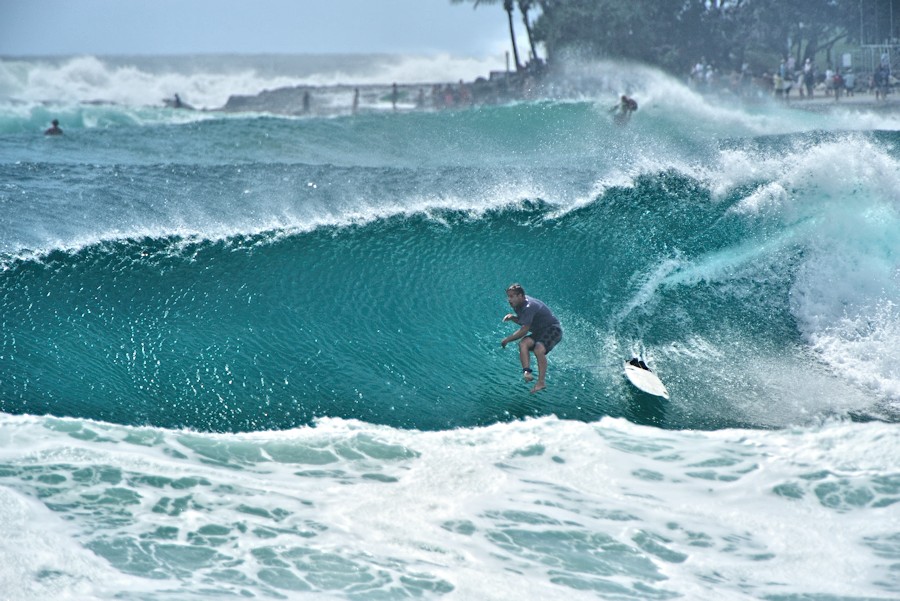
Dan.
|
|
Forum: Photographic Technique
09-13-2018, 01:21 PM
|
| |
iheiramo, I like the composition of your wind-surfing shot. The colour of the sail amidst the otherwise drab colours makes your subject stand out.
And the extra-low angle works well here.
BTW, I tried a portrait-orientation crop of this shot. Full height, with the sail a bit in from LH edge and the spray almost to the RH edge of the crop. I think that works well too.
Dan.
|
|
Forum: Photographic Technique
09-09-2018, 06:42 AM
|
| |
I've shot junior athletics and soccer in the rain. I like the extra drama and determination that you see in heavy rain. And the splashing around. I use the DA* 60-250/F4. It's OK for about 60-90 mins but eventually the changes in internal volume from constant zooming in and out seems to draw moist air into the lens and it fogs up. An internal focus (IF) zoom lens would probably be better.
K-5 for sports-photography - Page 40 - PentaxForums.com
If shooting a subject some distance away in heavy rain, the amount of rain greatly decreases the contrast. (I think it's more than just the heavily overcast conditions.) I find it worthwhile to increase the Contrast/raise the Black Point when you develop the images.
Dan.
|
|
Forum: Photographic Technique
08-30-2018, 04:44 PM
|
| |
ricfam's soccer kick shot reminds me of a shot I posted in this thread back in 2014. Here's are reworked version. It was slightly OOF but I've managed to improve it with FocusMagic. This U13 player impressed me with his athleticism. (Open the image in a new tab and view at 100% to see the intended level of sharpening.)
A flying junior soccer kick. K3 + DA* 60-250/F4 @250mm FL, 1/1000s, f/7.1, ISO500.

Dan.
|
|
Forum: Photography Articles
04-28-2018, 04:02 PM
|
| |
ExifTool (ExifTool by Phil Harvey), written by Phil Harvey, shows 2 LV entries in Pentax image files:
Light Value: computed by Exiftool using LV = 2 * log2(Aperture) - log2(ShutterSpeed) - log2(ISO/100)
Effective LV: in the MakerNotes section.
This is different from APEX, which uses ISO3.125 (Sv 0) as the Speed Value reference, whereas the formula above uses ISO100 (Sv 5).
Probably because LV = EV100 has gained some currency. Lv & Bv are being used interchangeably too.
See: Light value - Wikipedia
Doug Kerr mentions this trend on p.10 of http://dougkerr.net/Pumpkin/articles/APEX.pdf
Scene brightness in Ev?
We often see, especially in camera specifications, a factor that seems
to be scene luminance (brightness) described in terms of an Ev
number. Such a factor might be, for example, the lowest scene
luminance for which the exposure metering system of the camera is
able to function reliably.
This usage is unfortunate and technically inappropriate, as Ev is a
measure of exposure, not luminance. There is a perfectly good APEX
quantity for luminance: Bv. I suspect the motive for the practice is
that many photographic enthusiasts have heard of Ev but not Bv.
Of course, if we know the Ev that a camera’s metering system
recommends for a scene, we can in fact equate that to scene
luminance if we also know the ISO sensitivity (Sv) in effect.
It turns out that, when a manufacturer states some critical scene
luminance in terms of “Ev”, and nothing to the contrary is stated, it is
most often based on the assumption that the ISO sensitivity is
ISO 100 (Sv 5). (Canon, for example, so states explicitly.) In other
words, the luminance being described is that which, if the ISO
sensitivity of the camera were ISO 100, would lead to the camera
arranging for an exposure of the stated Ev.
The relationship between this irregular description of scene luminance
in “Ev” and the description of that luminance in the proper value, BV,
is as follows:
Bv=Ev’–5
where Ev’ is the so-called “Ev” used to describe the luminance.
I discourage this usage.
It looks like common usage is winning out.
The Exposure Value table (Table 2) "for various lighting conditions" below uses EV100 as an apparent surrogate for LV, presumably because ISO100 is of more relevance to normal photography than ISO3.125.
Exposure value - Wikipedia
Since the "Effective LV" tag in the MakerNotes section is showing maker-specific info, Pentax is also chosen to use ISO100 as their sensitivity reference value for LV.
My LV Calculator also uses ISO100 as the ISO stops reference, but compared to the formula in Exiftool, I do the log2 conversion once overall, rather then separately on each term. The one log2 conversion should reduce rounding errors.
Dan.
|
|
Forum: Digital Processing, Software, and Printing
04-28-2018, 02:37 PM
|
| |
ExifTool (ExifTool by Phil Harvey), written by Phil Harvey, shows 2 LV entries in Pentax image files:
Light Value: computed by Exiftool using LV = 2 * log2(Aperture) - log2(ShutterSpeed) - log2(ISO/100)
Effective LV: in the MakerNotes section.
This is different from APEX, which uses ISO3.125 (Sv 0) as the Speed Value reference, whereas the formula above uses ISO100 (Sv 5).
Probably because LV = EV100 has gained some currency. Lv & Bv are being used interchangeably too: Light value - Wikipedia
Doug Kerr mentions this trend on p.10 of http://dougkerr.net/Pumpkin/articles/APEX.pdf
Scene brightness in Ev?
We often see, especially in camera specifications, a factor that seems
to be scene luminance (brightness) described in terms of an Ev
number. Such a factor might be, for example, the lowest scene
luminance for which the exposure metering system of the camera is
able to function reliably.
This usage is unfortunate and technically inappropriate, as Ev is a
measure of exposure, not luminance. There is a perfectly good APEX
quantity for luminance: Bv. I suspect the motive for the practice is
that many photographic enthusiasts have heard of Ev but not Bv.
Of course, if we know the Ev that a camera’s metering system
recommends for a scene, we can in fact equate that to scene
luminance if we also know the ISO sensitivity (Sv) in effect.
It turns out that, when a manufacturer states some critical scene
luminance in terms of “Ev”, and nothing to the contrary is stated, it is
most often based on the assumption that the ISO sensitivity is
ISO 100 (Sv 5). (Canon, for example, so states explicitly.) In other
words, the luminance being described is that which, if the ISO
sensitivity of the camera were ISO 100, would lead to the camera
arranging for an exposure of the stated Ev.
The relationship between this irregular description of scene luminance
in “Ev” and the description of that luminance in the proper value, BV,
is as follows:
Bv=Ev’–5 (9)
where Ev’ is the so-called “Ev” used to describe the luminance.
I discourage this usage.
It looks like common usage is winning out.
The Exposure Value table (Table 2) "for various lighting conditions" below uses EV100 as an apparent surrogate for LV, presumably because ISO100 is of more relevance to normal photography than ISO3.125.
Exposure value - Wikipedia
Since the "Effective LV" tag in the MakerNotes section is showing maker-specific info, Pentax is also chosen to use ISO100 as their sensitivity reference value for LV.
My LV Calculator also uses ISO100 as the ISO stops reference, but compared to the formula in Exiftool, I do the log2 conversion once overall, rather then separately on each term. The one log2 conversion should reduce rounding errors.
Dan.
|
|
Forum: Photography Articles
04-25-2018, 06:47 AM
|
| |
The sensitivity of an image sensor can be defined in at least two different ways:
- Quantum Efficiency (QE) is how efficiently photons are being converted to photo-electrons. To increase this you need to either increase the Fill-factor, by adding or improving the microlenses above every sensel or use a more transmittive Colour Filter Array or remove the CFA completely and shoot monochrome. By using high voltage it is possible to use photon-multiplication and avalanche-mode techniques to increase the number of photo-electrons released by a photon, but such methods are too complex and costly for consumer DSLRs and are usually reserved for specialised surveillance and military usage.
- Conversion Gain (CG) is how large an output voltage is produced per photo-electron. Since the number of photons captured is still the same, the shot noise SNR is still the same. But a high CG helps to overwhelm the read noise (RN) being contributed by the output Source Follower (SF) transistor associated with each sensel. Sensor design usually involves trade-offs. High CG (HCG) improves the noise performance at low Light levels (LL). But HCG means that less photons can be captured before either the FWC of the sensel is reached or the ADC runs out of digits. When dealing with LL, there aren't that many photons so HCG is desirable. But in good light, noise is not a problem, but a large FWC leads to a better Dynamic Range (DR), hence the desirability of LCG. In most sensors, the chosen CG was therefore a compromise.
Today we have the luxury of Dual CG sensels in many Sony-manufactured sensors. This technology became available to Sony through an IP swap with Micron/Aptina (now ON Semi). See this white paper:
http://www.photonstophotos.net/Aptina/DR-Pix_WhitePaper.pdf
It's pretty easy to see which sensors are using Dual-CG tech: just look for the discontinuity in the mid-ISO region, in an Input-Referenced RN vs ISO chart (from http://www.photonstophotos.net/Charts/RN_e.htm):
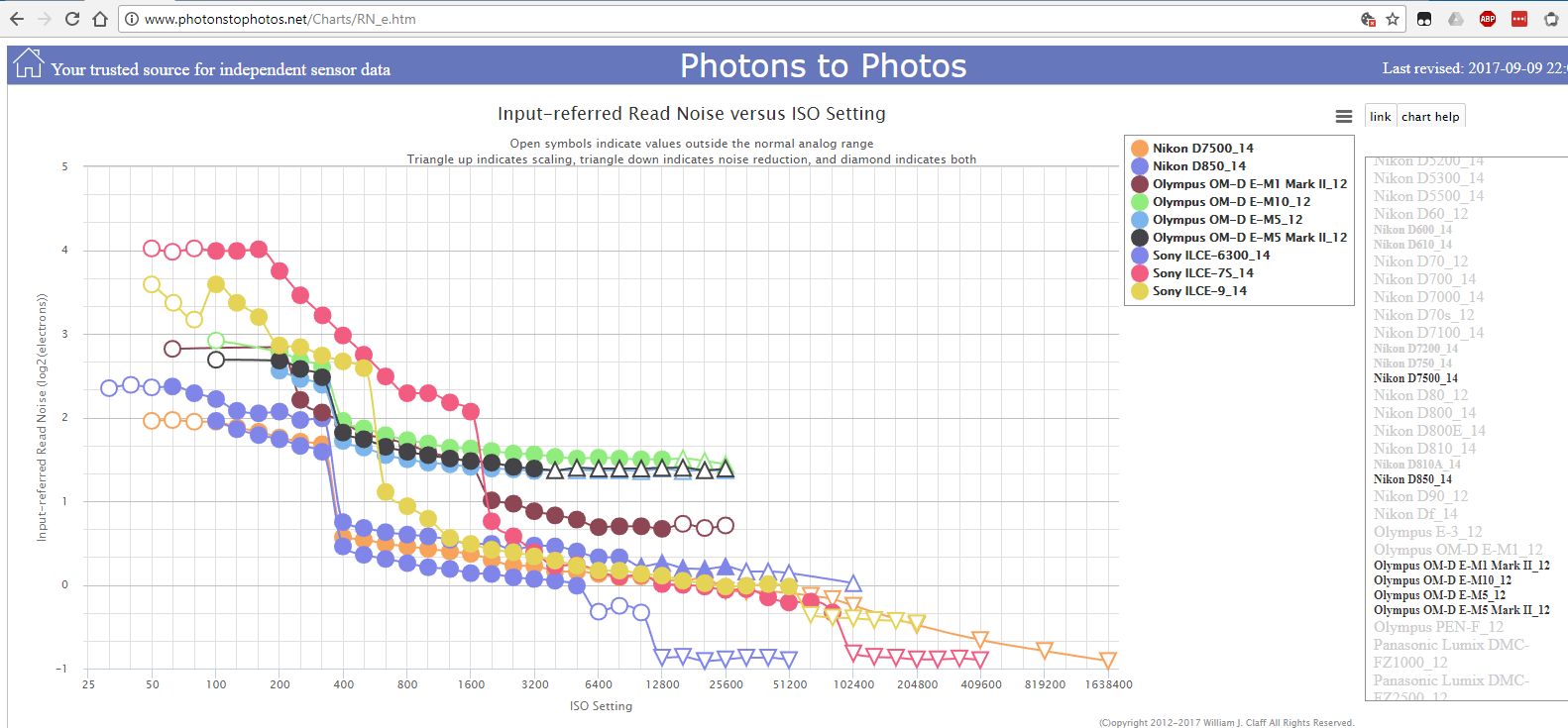
(A discontinuity at High-ISO will be raw-level NR kicking in.)
So now we can switch the "sensitivity" between LCG & HCG (Dual CG) when we alter ISO in some cameras.
But Dual CG may not be the final improvement in this area. A very interesting paper has appeared at the 2017 IISS Workshop about "An 87dB Single Exposure Dynamic Range CMOS Image Sensor with a 3.0μm Triple Conversion Gain Pixel":
http://www.imagesensors.org/Past%20Workshops/2017%20Workshop/2017%20Papers/R29.pdf
Fig.5's caption in that paper mentions: In the LPG mode, photodiode saturation occurs before ADC saturation.
When the sensel saturates before the ADC, you get a "soft-limiter" knee whereas, if the ADC saturates first, you get a 'hard-limiter" knee. Compare Figs. 1 & 2 here:
How to Measure Full Well Capacity (1) « Harvest Imaging Blog
The gain is usually set in DSLRs so that the ADC saturates before the sensel.
Anyone who has ever done an "Introduction to Semiconductors" has heard of electrons & holes (an atom with a missing electron in the valency band/outer shell, aka a positive ion).
See: What is hole? - Definition from WhatIs.com
When a photon is converted in a sensor, it liberates a negatively-charged electron (e-) within the pinned photo-diode (PPD), leaving behind a positively-charged hole (h+). The e-, accumulated in the PPD during the duration of the exposure, are then transferred to the floating diffusion (FD). The h+ are not used and are drained away into the substrate. This is because electrons are typically the primary charge carriers in most semiconductor devices. Quoting from Electron hole - Wikipedia
In most semiconductors, the effective mass of a hole is much larger than that of an electron. This results in lower mobility for holes under the influence of an electric field and this may slow down the speed of the electronic device made of that semiconductor. This is one major reason for adopting electrons as the primary charge carriers, whenever possible in semiconductor devices, rather than holes. Also, why NMOS logic is faster than PMOS logic. However, in this innovative sensor design, both e- & h+ are collected:
Sensors | Free Full-Text | A 750 K Photocharge Linear Full Well in a 3.2 ?m HDR Pixel with Complementary Carrier Collection
BTW, Section 1.4. of the article above discusses dual-PD pixels to improve DR. An example of this is the 2006 FujiFilm FinePix S5 Pro (FinePix S5 Pro - Wikipedia) which used a Super CCD SR sensor (Super CCD - Wikipedia). (Note: Some Canon sensors also use dual-PPD pixels, but this is for AF reasons, not for DR improvement.) Compare the DR & SNR 18% of the S5 Pro against the 2005 D200, with its conventional CCD sensor, and with a CMOS sensor of the modern era, the break-through Sony IMX071, as used in the 2010 Pentax K-5:
Pentax K-5 vs Fujifilm FinePix S5 Pro vs Nikon D200
The differences in SNR 18% are due to QE, which is affected mainly by fill-factor and CFA filter transmissivity. The article mentions that dual-pixel designs, through a lower fill-factor, lose at least 5% QE compared to a conventional design.
The DR of the S5 Pro was exceptional in its day, and still impressive today until you exceed ISO800. Above this ISO, only the output from the larger pixel in the Super CD SR sensor is used, so it has similar performance to a conventional sensor. As I understand it, the reason the small pixel is switched off above ISO800 is because, as ISO increases, you are dealing with smaller and smaller exposures. (The reason for using higher ISOs, in the first place, is to brighten dimmer & dimmer exposures.) But the small pixel is relatively noisy, so continuing to include its RN contribution to the Total RN becomes untenable as the wanted signal level decreases.
Dan.
|











